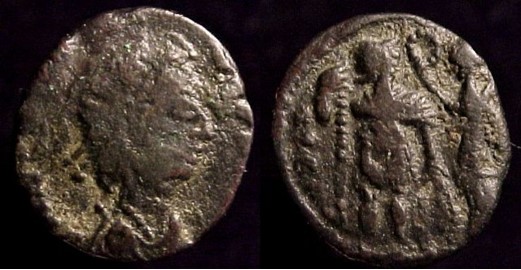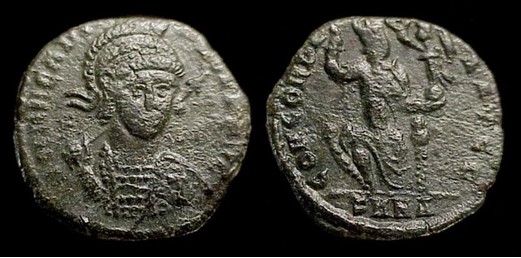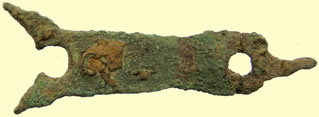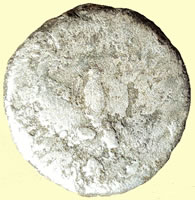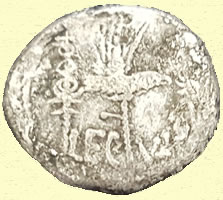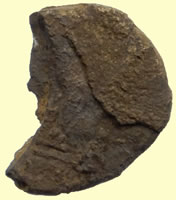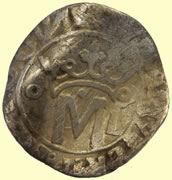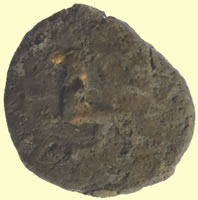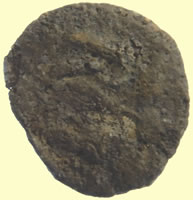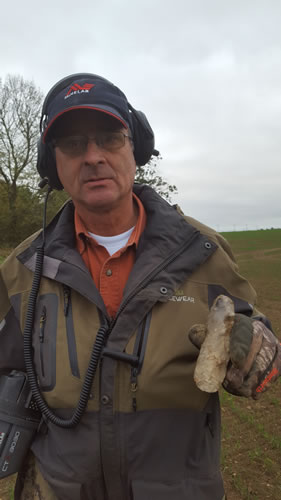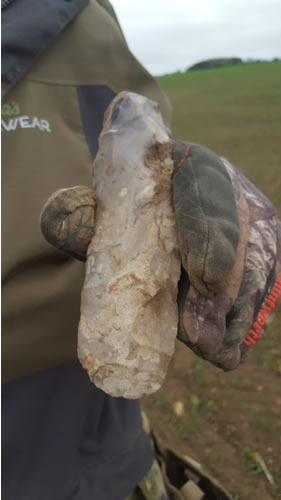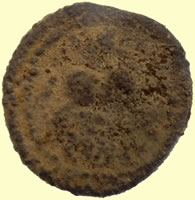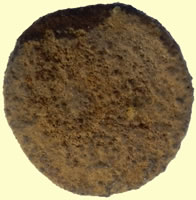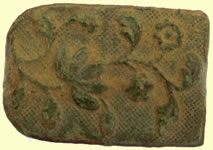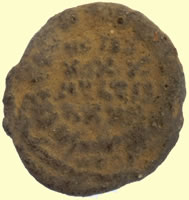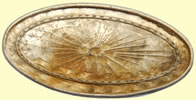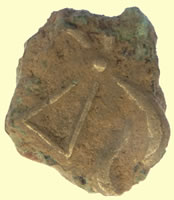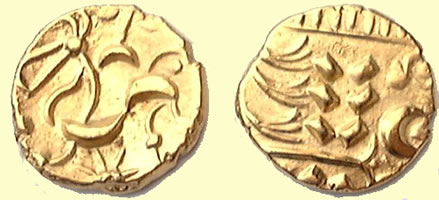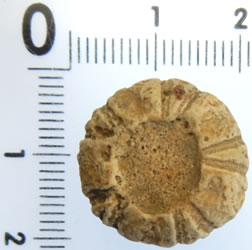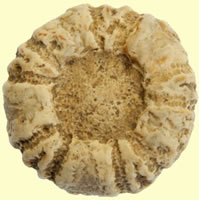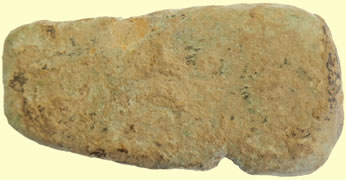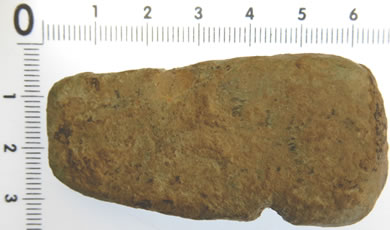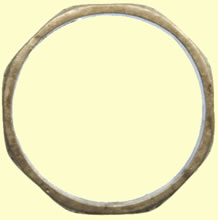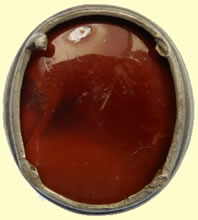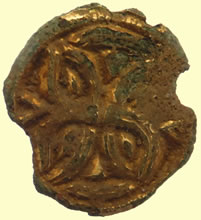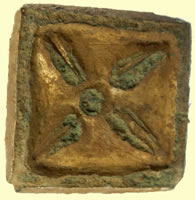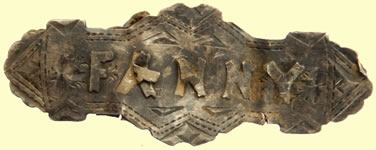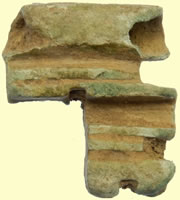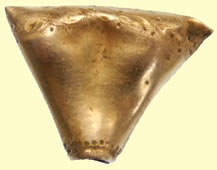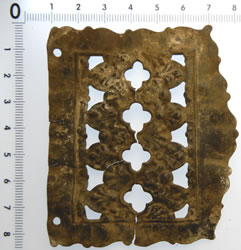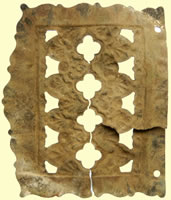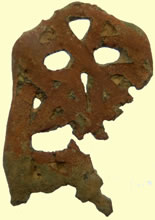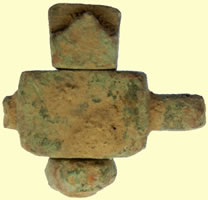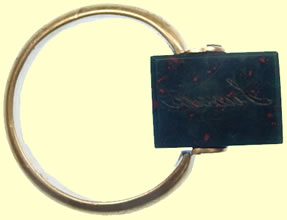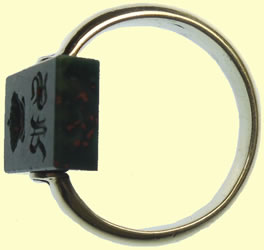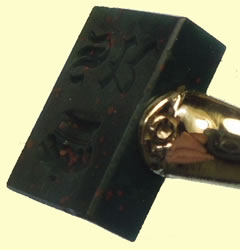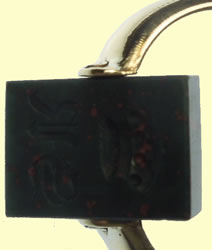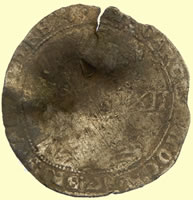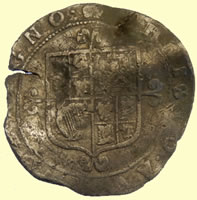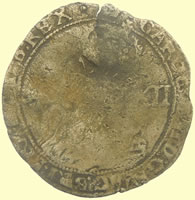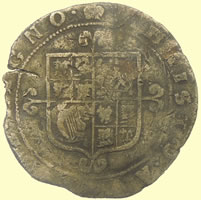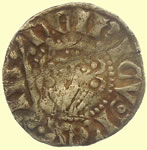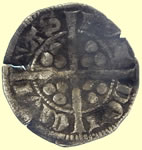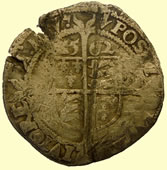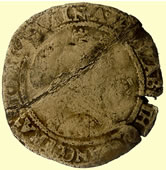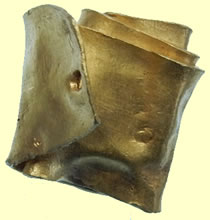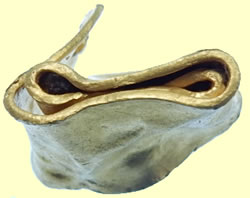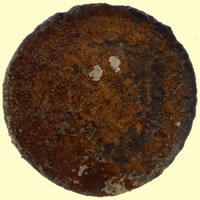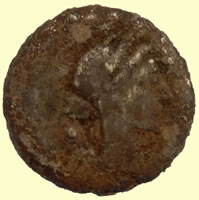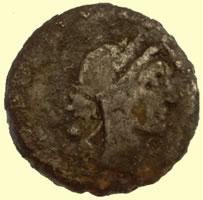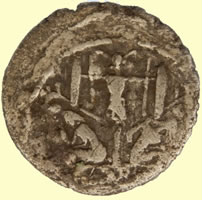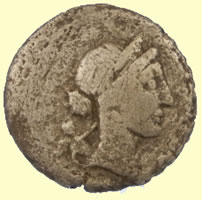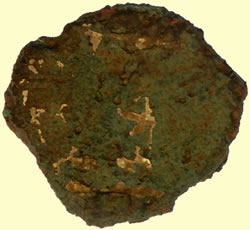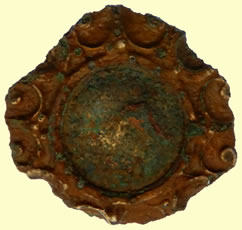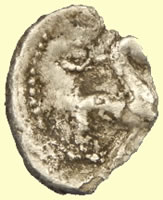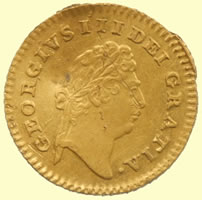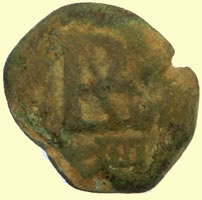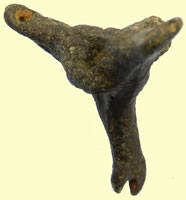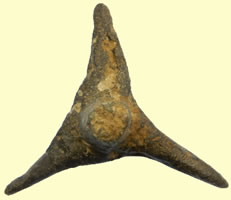

Metal detecting holidays in England with the World's most successful metal detecting club.
Twinned with Midwest Historical Research Society USA
2017 Oct finds |
Facinating Celtic gold qtr find that appears to be a 70BC Morini boat tree type but it is not.It is underweight by 0.5g and debased gold. Morini's are typically pure gold and 1.44g,10.5mm It is possibly the earliest British Celtic gold coin example - sent off to musuem for confirmation
0.89g,11.86mm |
|||
Monster sized cow bell- Aldbourne foundary 1760-1780 Robert Well I |
|||
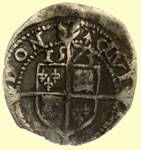  |
  |
||
| 1575 Elizabeth 1st hammered silver penny - Ermine mint mark | 1620-1 James 1st hammered silver half groat- Rose mint mark | ||
Monster rare find - 1554-8 Phlip and Mary hammered silver penny -Lis mint mark |
|||
|
|||
1636 Charles 1st hammered copper rose farthings
|
|||
  |
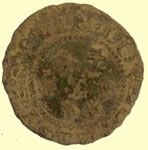 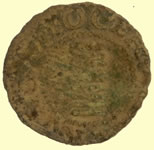 |
||
| Medieval gilded hanress pendant | 17thC John King, grocer of Colchster Essex hammered copper trade farthing Ref Norweb 1185 |
||
 |
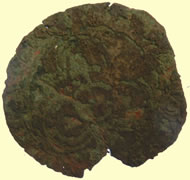  |
||
| 1500-1650 buckle | 1586 Hans Krauwincel II Rose orb Jeton | ||
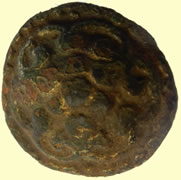 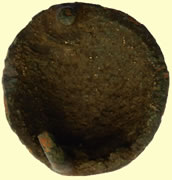 |
  |
||
| 1500-1660 mount | 16thC Continental jetton | ||
1st to 2nd C Roman silver coin sent for ID - needs a good cook to remove crust |
|||
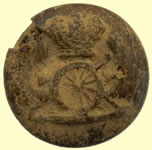 |
 |
|
|
| Victorian Royal Artillery button | 1500-1650 buckle | 1636 Charles 1st hammered copper rose farthings | |
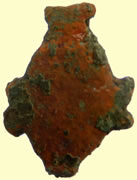 |
 |
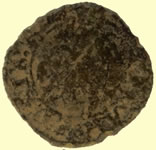  |
|
| 1500-1700 mount | 15thC lead token - type 2 | 17thC hammered copper trade farthing | |
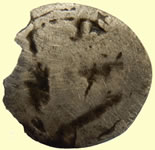  |
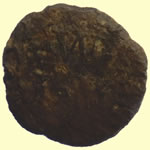  |
||
| Medieval hammered silver long cross penny | 17thC hammered copper trade farthing | ||
Medieval to Post-Medieval barrel tap and spigot (c. AD 1400 – c. AD 1550). |
|||
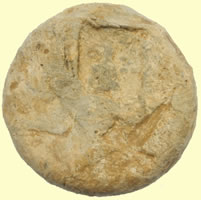  |
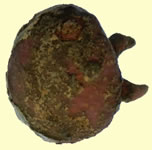 |
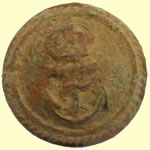 |
|
17thC lead trade weight Sword of St Paul mark 36mm,3.8oz |
16thC Tudor button | RN Cap't / Commander - 1901 | |
 |
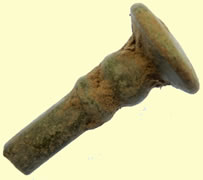 |
 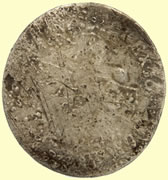 |
|
| 1500-1700 mount | 16thC Tudor seal spoon handle | 1696 William III milled silver shilling | |
 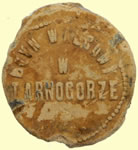 |
  |
||
| Post medieval Polish lead bale seal | Air training corp buttons 1941 the Air Training Corps (ATC) was officially established |
||
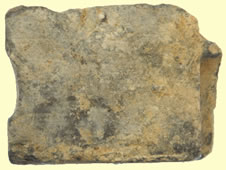 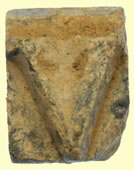 |
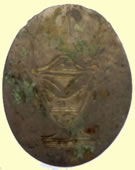 |
 |
|
| 19thC printing press block - V | Georgian cuff link | Post medieval lead mount | |
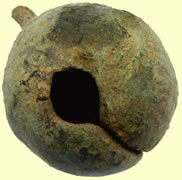 |
 |
 |
|
| 18thC crotal bell | 1600-1650 buckle | Georgian silver spoon handle | |
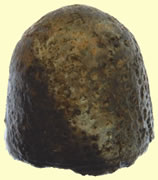 |
  |
||
| 15thC bronze thimble | Georgian silver faced button | ||
1900 Victoria milled silver half sovereign 19mm, 20.15g |
|||
 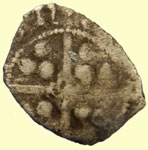 |
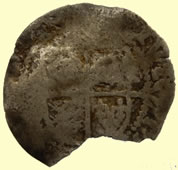 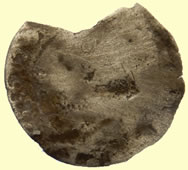 |
||
| Medieval hammered silver long cross half penny - Quatrefoil with pellet in centre of cross - York mint | 16thC Elizabeth 1st hammered silver half groat | ||
 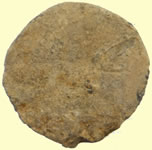 |
  |
||
| Medieval lead token | 17thC lead token | ||
 |
 |
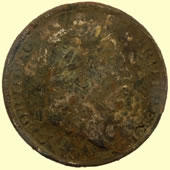 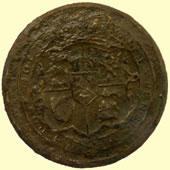 |
|
| 15thC lead token | 20thC corporation button | 1818 George III milled silver shilling forgery | |
|
|||
Medieval seal matrix - Madonna and child impression Detail is cleaning up nicely |
|||
 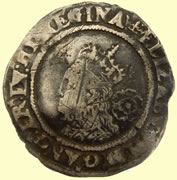 |
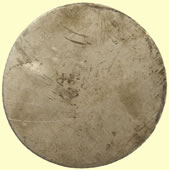  |
||
| 1569 Elizabeth 1st hammered silver sixpence - Coronet mint mark | 17thC William III milled silver shilling | ||
 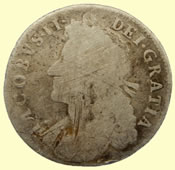 |
|||
| Rare find - 1685 James II milled silver shilling | |||
1465-76 Edward IV hammererd silver long cross penny -T and key by neck - Class XXIiv (York) Bishop George Neville - Quatrefoil at centre of reverse cross Obv EDW***********
|
|||
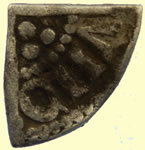  |
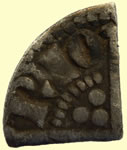  |
||
1247 Henry III hammered silver voided long cross farthing Rev VND - London mint |
1247 Henry III hammered silver voided long cross farthing Rev RIO - Moneyer Henri |
||
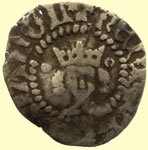 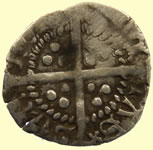 |
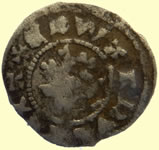  |
||
1413-22 Henry V hammered silver half penny - Type 2, pellet and broken annulet by crown - satire stops in reverse legend Obv + HENRIC REX ANGL Rev CIVI/TAS/LON/DON - London mint
|
1300-1310 Edward 1st hammered silver half penny -type 28 - New issue inner circles both sides Obv + EDWARDVS REX A Rev CIVI/TAS/LON/DON- London mint |
||
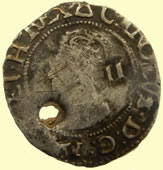  |
  |
||
| 1639-40 Charles 1st hammered silver hammered silver half groat- triangle mint mark | 1817 George III milled silver sixpence | ||
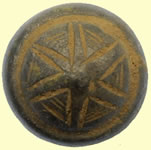 |
 |
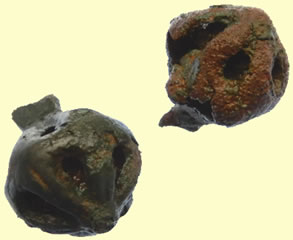 |
|
| 17thC button | Georgian watch winder | 2 - 16thC Tudor buttons | |
19thC advertising token Malborough & Waterloo House, Harwich Essex. Tea, Coffee,Peter,Nutmeg.Ginger,Clover, Mustard,Coco,Tapioca. Raw & Loaf Sugars The Trade supplied Wholesale Prices for Cash Only |
|||
  |
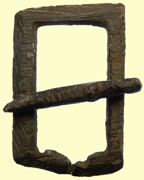 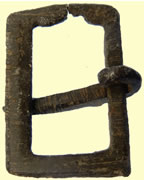 |
||
| 15thC lead token | Medieval buckle | ||
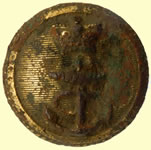 |
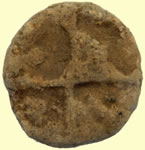 |
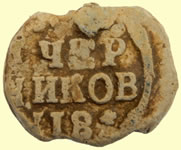 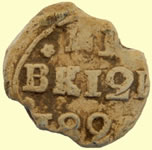 |
|
| RN Capt / Commander - 1812 | 15thC lead token - type 2 | Post medieval Russian lead bale seal | |
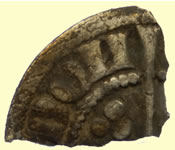  |
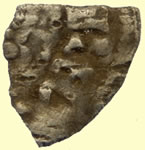 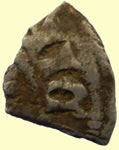 |
||
1279 Edward 1st hammered silver long cross farthing Obv hYB+ED*** Rev /DON - London mint |
Medieval hammered silver coin fragment | ||
 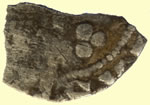 |
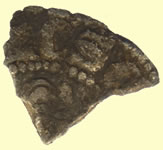  |
||
| Medieval hammered silver long cross coin fragment | Medieval hammered silver long cross coin fragment Rev CA- Newcastle mint |
||
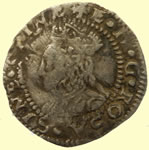  |
  |
||
| 1560-1 Elizabeth 1st hammered silver penny - Corss Crosslet mint mark | 1247 Henry III hammered silver voided long cross half penny Rev EN/AVD - Moneyer Renavd |
||
  |
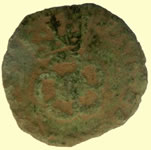 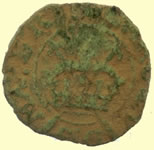 |
||
| 1247 Henry III hammered silver voided long cross half penny | 1638 Charles 1st hammered silver rose farthing | ||
 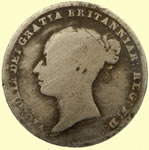 |
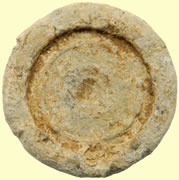 |
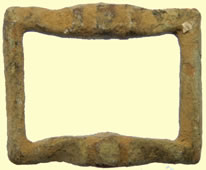 |
|
| 19thC Victoria milled silver sixpence | Medieval lead trade weight | Georgian buckle | |
 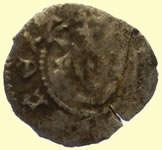 |
 |
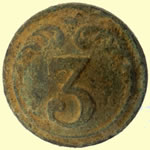 |
|
1300-1310 Edward 1st hammered silver half penny -type 28 - New issue inner circles both sides Obv + EDWARDVS REX A Rev CIVI/TAS/LON/DON- London mint |
19thC livery button | French Infantry Button 3rd Line Regiment Circa 1803-1814 |
|
  |
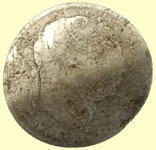  |
||
| Medieval hammered silver long cross penny | 1817 George III milled silver sixpence | ||
 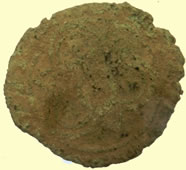 |
|
||
| 1586 Hans Krauwincel II Rose orb Jetton | Medieval buckle | ||
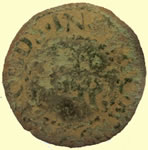 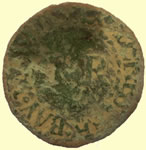 |
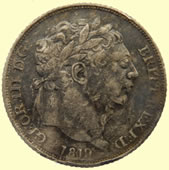 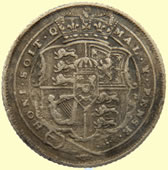 |
||
| 17thC Thomas Reynolds bays maker of Colchester hammered copper farthing - undated type | 1819 George III milled silver shilling | ||
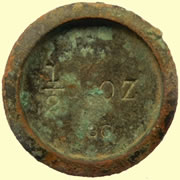 |
 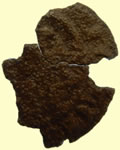 |
||
| Victorian half ounce trade weight | Medieval hammered silver long cross penny fragment | ||
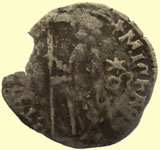  |
  |
||
Doge Michele Steno (1400-1413).
Doge standing left, holding banner, * / m in right field |
1279 Edward III hammered silver long cross penny fragment Obv AR ANGL D*** Rev LON/DON - London mint |
||
 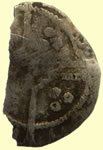 |
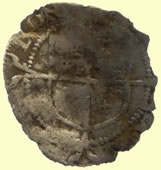  |
||
1422-27 Henry VI hammered silver long cross penny - Rose at centre of reverse cross - York mint - Mullet by left of crown Obv ****ANGLIE |
16thC Elizabeth 1st hammered silver half groat | ||
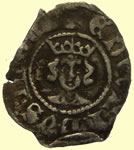 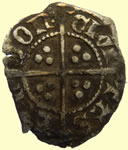 |
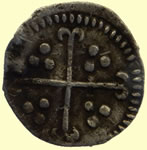  |
||
1300-1310 Edward 1st hammered silver half penny -type 28 - New issue inner circles both sides Obv + EDWARDVS REX A Rev CIVI/TAS/LON/DON- London mint |
1582-1600 Elizabeth 1sr hammered silver halfpenny - No mint mark type | ||
4thC Roman bronze coin - interesting obverse - sent for ID Chris, This piece is mighty scant of legend, but I can make a few reasonably safe assumptions about it. It could be Crispus, Constantine II or Constantius II – (and possibly Constans?) at any rate, it’s one of the sons of Constantine I – here’s a typical Crispus from that time: a Constantine II, Caesar and Constantius II, Caesar: I think you can see how similar they are, also that aside from a few letters in the area off-flan on your specimen, their legends are essentially very much the same as well. The most commonly seen ruler (although not, evidently, at the time I was photographing – I’m sure I have better specimens now, but they are awaiting their eventual turn on my website) is Constantine II, Caesar, but Constantius II, Caesar is right up there in numbers as well. Mark
|
|||
  |
 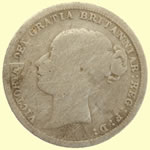 |
||
| 1837 USA milled silver 1 dime | 1884 Victoria milled silver sixpence | ||
1636 Charles 1st hammered copper rose farthings |
|||
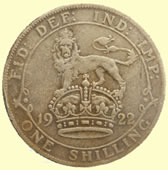  |
 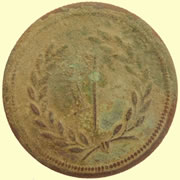 |
||
| 1922 George V milled silver shilling (12 pence) | Victorian copper token - Samuel Perrins 13 Union St, Spitalfields market, London |
||
 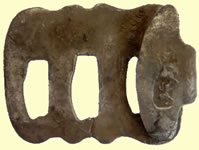 |
 |
||
| 18thC silver clog fastener | Lead toy horse | ||
 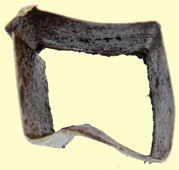 |
 |
 |
|
| 1895 Victorian silver band - London | 18thC silver Royal Navy button | 1603 James 1st trade weight - Crown I cipher | |
 |
 |
||
| Early medieval pin | Medieval annular brooch | ||
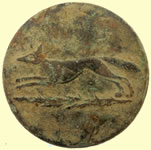 |
 |
 |
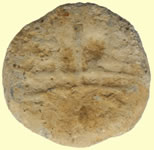 |
| 19thC hunting button | 15thC lead token | 15thC lead token | |
 |
 |
 |
|
| WWI Royal Hussars | Royal Harwich Volunteers button - not in any books from circa 1803 Napoleonic period |
19thC livery button | |
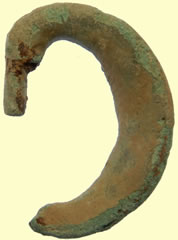 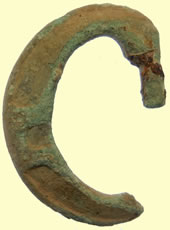 |
|||
| Roman bronze terret ring | |||
BC looking Republican Roman silver coin - needs cooking to show up detail Sent to Mark Lehman for an initial ID as it has an unusal obverse symbol
|
|||
  |
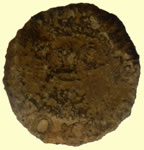 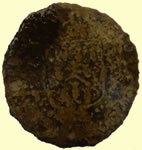 |
||
| 1665 hammered copper trade farthing | 17thC hammered copper trade farthing | ||
 |
 |
 |
|
Royal Navy - Officers (Roped Rim) Lined Background 1843-1891 |
17thC button | Unusual trade weight - stars and 895 inscription ?? Need to check my ref books |
|
 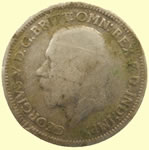 |
  |
||
| 1934 George V milled silver sixpence | Medeival harness pendant | ||
|
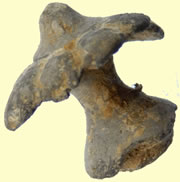  |
||
| Victorian silver clasp | Georgian lead tobacco jar lid handle | ||
  |
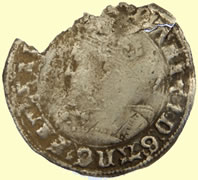  |
||
| It shows these as Roman in my ref books but I am not convinced they are more modern than that ?? | 1553-54 Mary hammered silver groat - Pomegrante mint mark | ||
Romano-British protected loop terret 'Protected loop terrets are usually considered to be Roman and dating to the late first and second centuries AD' This Roman terret ring dates to circa 1st - 2nd century AD. Terret rings were attached to chariots, carts or wagons and served as rein-guides. They helped guide in reins from the horses harness to the rider/charioteers hands. This particular type of 'skirted' terret ring dates to the Roman period (more specifically 1st - 2nd century AD). The terret would have been strapped to a wooden yoke, which is a pole fixed to the front of the cart and passed between a pair of horses. Most vehicles would have five terrets; four small side terrets (two for the reins of each horse) and one larger central terret, probably at the end of the yoke closest to the driver, through which the reins would pass. |
|||
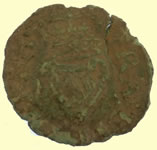  |
 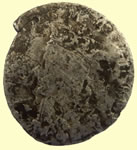 |
||
614-25 James 1st hammered copper farthing General type Obv. IACO D G MAG BR (IT) Rev. FRA ET HIB REX |
Early 1660- 2 Charles II milled silver penny - this legend CAROLVS.II.D.G - Crown mint mark | ||
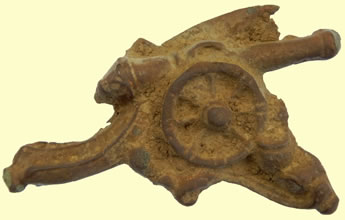 |
 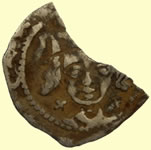 |
||
| Unknown artillery badge - Not British, cannon facing right ?? | 1472 -8 Irish Edward IV hammered silver long cross penny - Satires by neck - Quatrefoil in centre of reverse cross Rev TAS/WAR - Warterford mint |
||
 |
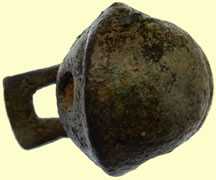 |
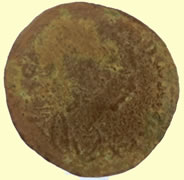 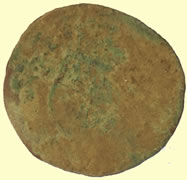 |
|
| Tiny George 1st trade weight - Crown G cipher | 18thC crotal bell | Interesting Continental 17th/18thC looking jetton - not got the ref books out yet | |
 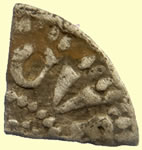 |
 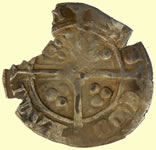 |
||
1247 Henry III hammered silver voided long cross farthing- Rev /TON/ |
1352-1353 Edward III hammered silver penny, Pre Treaty, Series D Archiepiscopal issue Quadrefoil with pellet at centre of reverse cross Obv +ED*******ANGLIE Rev CIVI/TAS/EBO/RACI - York mint |
||
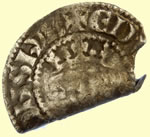 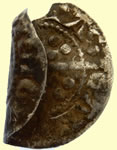 |
  |
||
1279 Edward 1st hammered silver penny Obv +ED*****DNS hYB Rev CIVI/TAS/CAN/TOR - Canterbury mint |
1300-1310 Edward 1st hammered silver half penny -type 28 - New issue inner circles both sides Obv + EDWARDVS REX ** Rev CIVI/TAS/LON/DON- London mint |
||
  |
|
||
1413- 22 Henry V hammered silver half penny - Type 4 Satire after TAS- Henry V, Broken annulet by crown Obv +hENRIC x REX *** Rev CIVI/TAS*/LON/DON- London mint |
C10thC Saxon harness cheek piece | ||
  |
|||
| 1817 George III milled silver sixpence | |||
1842 Victoria milled gold half sovereign 20.15g, 19.32mm |
|||
c20 AD Cunobelin gold qtr stater - linear series - sent to PAS for recording 11.37mm,1.36g |
|||
Eastern uninscribed Celtic gold full stater of Dubnovellaunus, c 20 BC - sent to PAS for recording Cleaned up now 5.42g,18.27mm |
|||
Henry V Annulet and mullet by shield type Spink Ref 1756 North 1382 Class C, these were also stuck in Henry VI period.The is a Henry VI legend with a Henry V shield. 1422- 61 Henry VI hammered gold quarter noble Obv +hENRICxREXxANGLxZx FRANC - double satires stop in reverse legend -Initial cross II Rev +EXALITA BITVR x IN x GLORIA Lis at centre of rev, Lis above shield Annulet and mullet by shield - single satire stops to legend in Obv 1.78g, 19.36mm |
|||
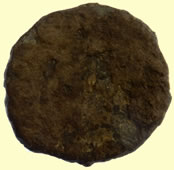  |
 |
 |
|
| 4thC Roman silver washed coin - needs cleaning to ID | Roman mount | 16thC Tudor button | |
  |
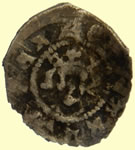 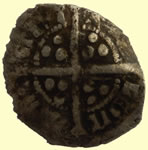 |
||
| Medieval mount |
1351-61 Edward III hammered silver farthing Obv +EDWARDVS REX Rev CIVI/TAS/LON/DON- London mint
|
||
 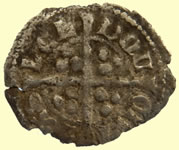 |
  |
||
1300-10 Edward II hammered silver farthing Obv EDWARDVS REX AN Rev CIVI/TAS/LON/DON - London mint |
1578 Elizabeth 1st hammered silver three pence | ||
1351-2 Edward III hammered silver groat - Cross 1 Type F Obv ** REX. ANGL. Z .FRANC. D.hYB Rev POSVI DEVM ADIVTORE MEVM (outer) Rev CIVI/TAS/LON/DON - London mint |
|||
 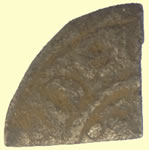 |
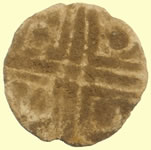 |
 |
|
1216 Henry III hammered silver short cross farthing Rev NIC - moneyer Nicole |
15thC lead token | Unknown Army button | |
 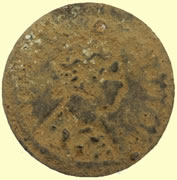 |
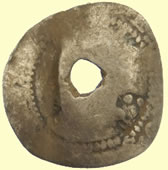 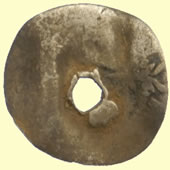 |
||
| Victoria token | 16thC Elizabeth 1st hammered silver half groat | ||
  |
  |
||
Medieval hammered silver long cross penny Rev CIVI/TAS/LON/DON - London mint |
1199 John hammered silver short cross half penny - Class 5 Rev .ALI - Moneyer Alisander or Alisandre |
||
 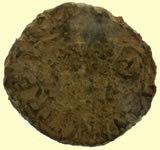 |
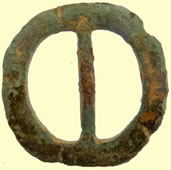  |
||
| 17thC hammered copper trade farthing | Cast copper alloy buckle Circa 1650-1720 |
||
 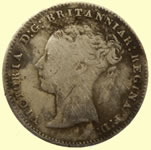 |
  |
||
| 1859 Victoria milled silver three pence | Medieval decorated mount | ||
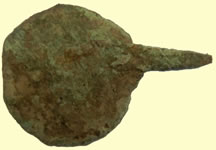 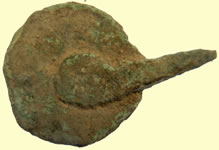 |
 |
||
| c10thC Saxon hook fastener | 1636 Charles 1st hammered copper rose farthings | ||
 |
 |
 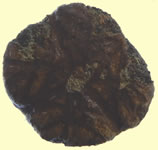 |
|
Mount ChronologyBroad period: MEDIEVAL Primary material: Copper alloy Manufacture method: Cast |
Medieval mount | Medieval decorated button | |
 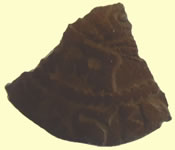 |
 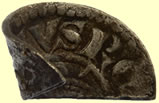 |
||
Medieval hammered silver long cross penny fragment Rev/TO - Canterbury mint |
1247 Henry III hammered silver voided long cross - Class 5g Ren TER/IOh/- Moneyer IoHS of Canterbury mint - |
||
  |
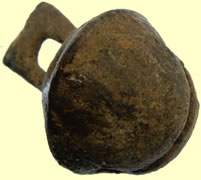 |
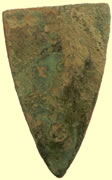 |
|
| 1216 Henry III hammered silver voided short cross half penny Rev OLE .ON.C - Moneyer Nicole of Canterbury mint |
|||
 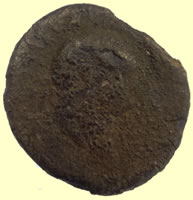 |
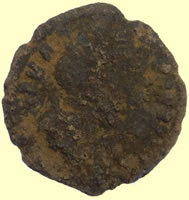 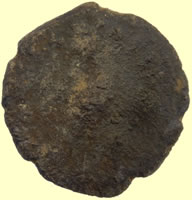 |
||
| Roman silver hoard coin - reported as hoard to museum | Roman silver hoard coin - reported as hoard museum | ||
Ancient gold ingot - undiagnostic 0.91g, 6.67g |
|||
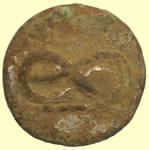 |
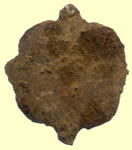 |
|
|
| 19thC livery buckle | Copper-alloy cast mount. The mount is quatrefoil in shape with a cusp in each angle. The reverse has two attachment lugs. 1600-1700 AD |
250 million year old Mesozoic and Cenozoic echinoderm | |
 |
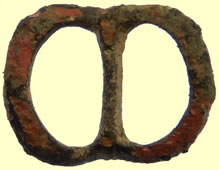 |
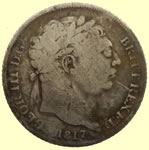 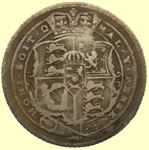 |
|
| WWI Royal Engineers lapel badge | 1500-1650 buckle | 1817 George III milled silver sixpence | |
Smallest copper coin I have ever seen, 8mm No idea what it is ?? Not English |
|||
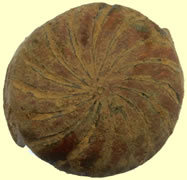 |
 |
 |
|
| 17thC belt slide | 17thC decorated handle | Edwardian mount | |
 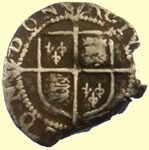 |
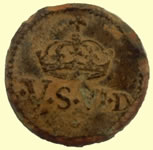  |
||
| 1582 -4 Elizabeth 1st hammered silver penny - A mint mark | 1632 5 shilling and 6 pence coin weight Obv Crown Vs VI D Rev George and dragon |
||
 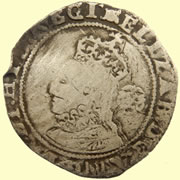 |
  |
||
| 1595 Elizabeth 1st hammered silver sixpence - woolpack mint mark | 1590-2 Elizabeth 1st hammered silver half groat- Hand mint mark | ||
  |
 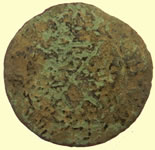 |
||
1377-1399 Richard II hammered silver half penny Obv + RICARD x REX x ANGL Rev CIVI/TAS/LON/DON- London mint |
17thC Jacob Vol,baymaker of Colchester Essex hammered copper trade farthing Obv IVR Ref Norweb 1230 |
||
London 1963 - 9 carat gold pendant |
|||
Unusual huge bronze pot foot - not the normal medieval type so possbly Roman - need to study my ref books |
|||
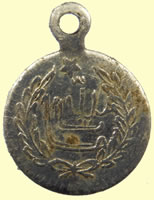 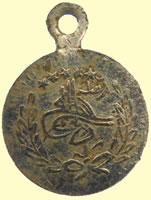 |
 |
 |
|
| 20thC Ottoman Empire medallion ? | 16thC Tudor button | 17thC lead token | |
 |
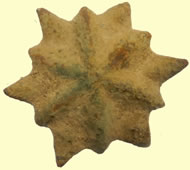 |
 |
 |
| RN Capt / Commander - 1787 RN Lieutenant - 1787 |
1500-1700 mount | 1500-1700 mount | Victorian - The 53rd (Shropshire) Regiment of Foot |
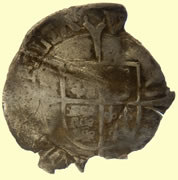 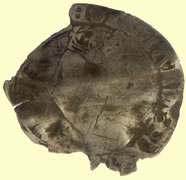 |
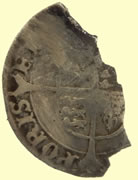 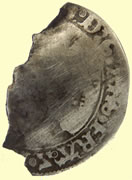 |
||
| 1554 Mary hammered silver groat | 1554 Mary hammered silver groat | ||
  |
  |
||
| 2nd C Roman fibular brooch fragment | 1666 hammered copper trade farthing | ||
  |
 |
 |
|
| 1578 Elizabeth hammered silver three pence - Greek Cross mint mark | 1500-1700 hooked mount | 1500-1650 buckle | |
 |
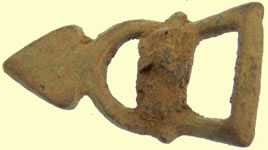 |
||
| 18thC boyonet frog | 1500-1650 spur buckle | ||
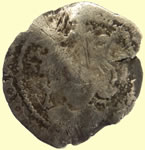 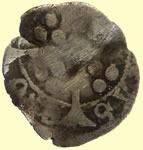 |
 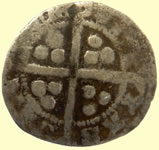 |
||
1279 Edward 1st hammered silver penny RevTAS/ENE - Durham mint |
1327-35 Edward III hammered silver penny - Florin issue Rev **** AIN + Rev CIVI/TAS/DV**/**E- Durham mint |
||
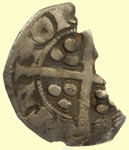 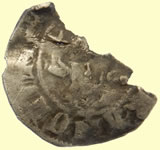 |
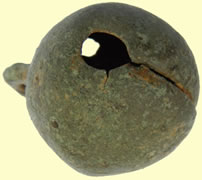 |
 |
|
1279 Edward 1st hammered silver penny Obv R ANGL DNS hYB Rev CAN/TOR - Canterbury mint |
18thC crotal bell | Georgian button | |
4thC Silver washed Roman sent for ID |
|||
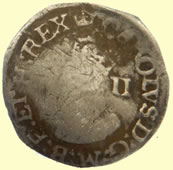  |
|
||
1635 - 1636, 1648 - 1649 Charles 1st hammered silver half groat Aberystwyth Furnace, Tower mint |
Medieval strap end | ||
 |
 |
 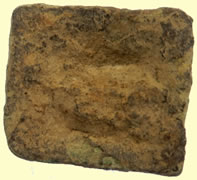 |
|
| 1500-1700 mount | 17thC lead token | Early medieval gilded mount | |
Continental medieval hammered silver coin - researching it A Medieval silver coin: type: Brabant Long Cross single-lion sterling (brabantinus), Walt type (M p. 13, 1a-g). Issuer: John I duke of Brabant 1267-1294 and Limburg 1288-1294. Date: ca. 1275-1285 Obverse description: Lion rampant within triangular shield |
|||
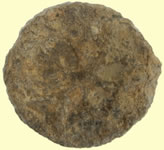 |
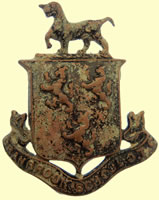 |
 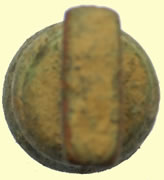 |
|
| Medieval lead token | Cranbrook School Essex badge | Georgian bell weight | |
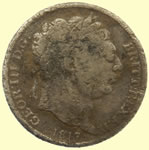 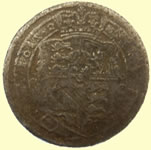 |
 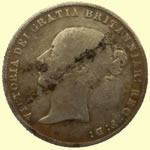 |
||
| 1817 George III milled silver sixpence | 1858 Victoria milled silver sixpence | ||
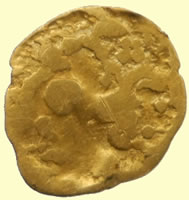 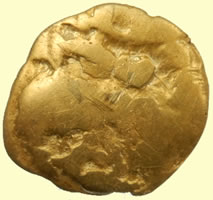 |
|||
150BC Celtic gold qtr stater - Gallo- Belgic A type 1.74g,15mm I think this is one of those 150BC examples - not checked my ref books yet Iron Age, mid-2nd century BC One of the earliest coins in Britain This is a superb example of the Iron Age die-engraver's art. It also represents what is thought to be the first type of coin ever to circulate in Britain. They were probably made on the Continent in northern France or Belgium. Gold coins like this crossed over the English Channel, perhaps in trade or as gifts between high-ranking individuals. Some of them were eventually buried in coin hoards and not recovered by their owners. The owner may have died, or simply forgotten where they had put them. Alternatively, the coins may have been intended as permanent, sacred offerings to the gods. They are mostly found today by metal-detectorists, in locations throughout south-east England. Another one was found at Fenny Stratford near Milton Keynes. The design of the coin is, at several stages removed, descended from the Greek gold staters of King Philip II of Macedon (reigned 359-336 BC). The hair on the left-facing head has grown considerably, while the original two-horsed chariot on the reverse of the coin has been transformed here into a lively, abstract depiction of a horse surrounded by a large array of symbols. I.M. Stead and S. Youngs, Celts, British Museum Pocket Treasury (London, The British Museum Press, 1996) D. Nash, Coinage in the Celtic world (London, Seaby, 1987) |
|||
 |
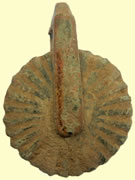 |
 |
|
| 18thC toy cannon | Georgian pastry jigger | Victorian The 53rd (Shropshire) Regiment of Foot | |
1640's English civil war 2 inch iron cannon ball |
|||
   |
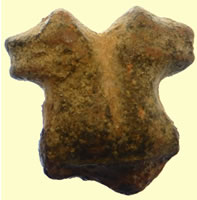  |
||
| Roman bronze pendant | Medieval animal headed knife pommel | ||
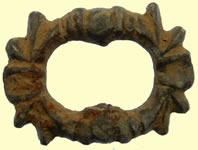 |
 |
  |
|
| Georgian shoe buckle | 19thC livery button | 1820 Geoeg III milled silver shilling | |
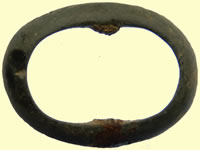 |
 |
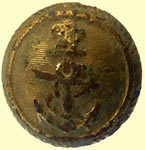 |
 |
| 1500 - 1650 buckle | Military button ? | Honourable East India Company Navy button | Georgian button |
1824 London hall marked silver spoon handle Maker Thomas Sones (registered Feb 1774) |
|||
 |
 |
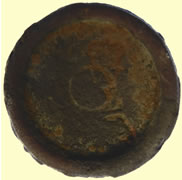 |
 |
| Georgian button | 15thC lead token | 17thC William III trade weight - Crown W cipher | 18thC button |
|
|||
10 -40 AD Cunobelinus Pegasus Victory left Celtic bronze unit - great ID by Ont Mike Scarce - probably issued for Kentish use
Ref ABC 2921
|
|||
Alexander II 1214-49 Scottish hammerd silver voided long penny Obv ALEXANDER REX Rev GEF/RAI/ON/AYR - Moneyer Gefrai of Ayr mint
|
|||
Mint Roman bronze coin - sent for ID The fairly clear, but edge-chipped centenionalis has Constantius II as Caesar (324-337 AD) on the obverse “FL IVL CONSTANTIVS NOB C” and as I’m sure you know, the two soldiers flanking one or two standards on the reverse will have GLORIA EXERCITVS for the legend. There are two standards, so it dates to the earlier part of the huge emission for the dedication of the new capital at Constantinople, 330-335 AD. In 336 AD, the number of standards was reduced from two to one when the weight of the centenionalis underwent a downward adjustment. I’m not quite certain what the mint mark is on this one, either. What I see doesn’t tend to make much sense, so what is visible must not be exactly what’s there. |
|||
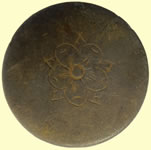 |
 |
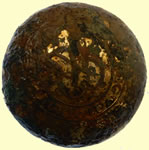 |
|
| 18thC Royal Navy button | Army button ? | Army button ? | |
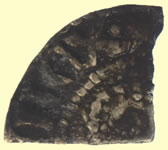 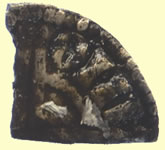 |
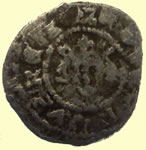  |
||
| 1247 Henry III hammered silver voided long cross farthing | 1344-51 Edward III hammered silver half penny - Florin coinage - Type 7 Obv +EDWARDVS REX Rev CIVI/TAS/LOND/DON - London mint |
||
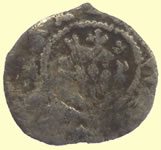 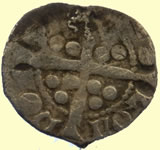 |
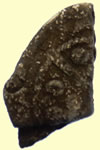  |
||
1300-10 Edward II hammered silver farthing- new issue with inner circles both sides - oval flan - chubby cheeks - Type 28 Obv + EDWARDVS REX Rev CIVI/TAS/LON/DON - London mint
|
Medieval long cross hammered silver penny fragment | ||
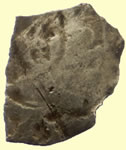 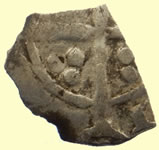 |
  |
||
| Medieval long cross hammered silver penny fragment | 1216 Henry III hammered silver short cross half penny | ||
  |
 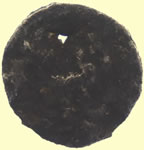 |
||
| 1843 Victoria milled silver three pence | 1625 Charles 1st hammered silver half penny - rose both sides, no legend type | ||
  |
  |
||
| 1636 Charles 1st hammered copper rose farthing | Charles 1st Royal farthing - Harp Type Maltravers 'rounds' 1634- 36 | ||
  |
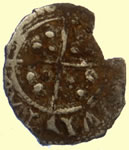  |
||
1469-70 Edward IV hammered silver half penny - Y mint mark - Type 3a Canterbury mint Archbishop Thomas Bourchier Obv + EDWA*** EX |
1526-44 Henry VIII hammered silver halfpenny - single arched crown -Cross furchee - narrow hair Im T Obv *h*****SPIA |
||
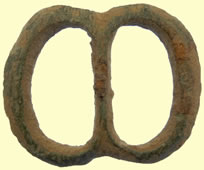 |
 |
  |
|
| 1500-1650 buckle | 16thC Tudor clothing fastener | Medieval button | |
  |
 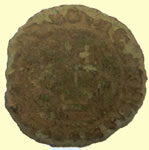 |
||
| Victorian silver can band | 17thC hammered copper trade farthing | ||
5thC Roman silver coin used by the Saxons to resemble a sceat and used as a pendant Sent to Mark Lehman for his ID I told you I’d get back to you on this one – so far as I can determine from the very few legible letters, this is a siliqua of Gratian, 367-383 AD, the obverse legend should be [D N] GRATIA[NVS P F AVG]. The reverse type is VRBS ROMA with Roma enthroned left holding Victory. The mint mark is fairly unclear, but I think it may be AQP[S] for the mint at Aquilea.
|
|||
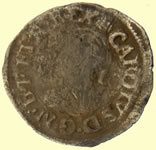 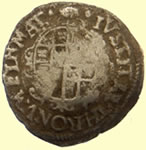 |
  |
||
| 1638-9 Charles 1st hammered silver penny - Tun mint mark | Victoria milled silver sixpence | ||
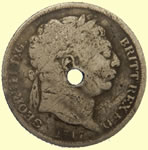 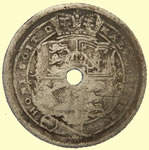 |
 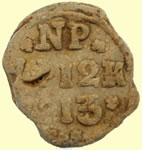 |
||
| 1817 George III milled silver sixpence | Post medeival lead token | ||
 |
   |
||
| 19thC livery button | Interesting token - not sure what it is ?? | ||
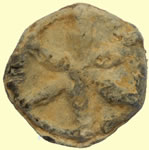 |
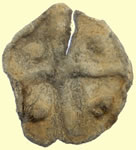 |
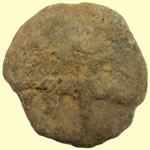 |
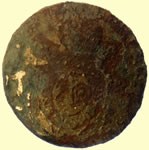 |
| 15thC lead token | 15thC lead token | 15thC lead token | 79th Regiment of Foot ( Cameron Highlanders ) O/R's (W/M) - 1830-1855 |
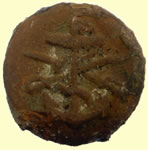 |
 |
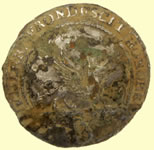 |
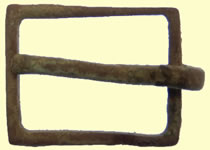 |
| Very interesting Navy button with crossed swords - not checked ref books yet | 18thC Royal Navy button | 19thC livery button | 1500-1700 buckle |
 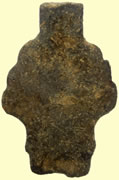 |
 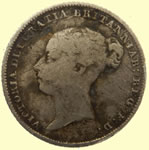 |
||
| Medieval mount | 1843 Victoria milled silver sixpence | ||
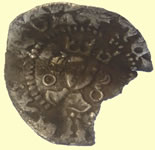  |
  |
||
1422-27 Henry VI First reign hammered silver half penny. A.2., roundabout mint mark Annulets by neck, annulets in centre of pellets in 2 qtrs Obv +hE*** ANGL Rev VILLA/CAL/ISIE - Calais mint |
16thC Elizabeth 1st hammered silver half groat | ||
 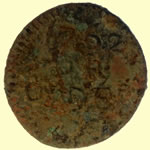 |
 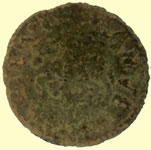 |
||
1792 dated 1 penny weight and 7 grains coin weight Obv DW 1 G 7 Rev 1792 |
1656 Samuel Salter of Dedham Copper trade farthing | ||
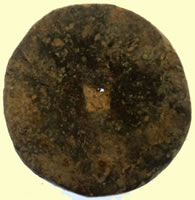 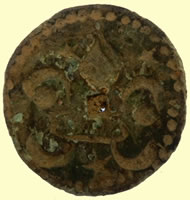 |
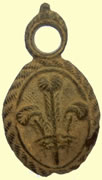 |
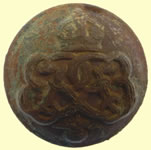 |
|
| 17thC seal matrix | 17thC Prince of Wales feathers pendant | 1881 Grenadier Guards | |
Primary Saxon silver sceat 600- 700 AD - sent to Fitzwilliam museum for ID and recording 1.02g,11mm This is a Series BII sceat recorded as EMC 2017.0317. |
|||
Georgian silver seal matrix |
|||
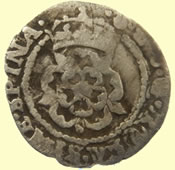 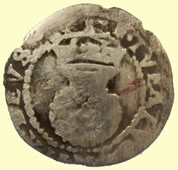 |
 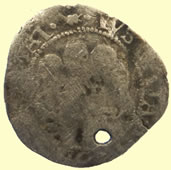 |
||
| 1606 James 1st hammered silver half groat-escallop mint mark | 1638-42 Charles 1st hammered silver half groat - Aberystwyth mint - book mark mint mark Rev Large plume |
||
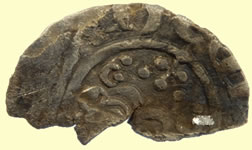 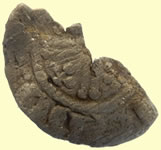 |
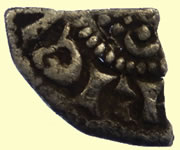  |
||
| 1216 Henry III hammered silver short cross half penny | 1247 Henry III hammered silver voided long cross farthing Rev RVS - Bristol mint |
||
Early 70BC uninscribed Maldon Wheel quarter - 'Remi 'Type Celtic gold qtr stater - sent to PAS for recording 13.45mm,1.34g The coin you sent, incidentally, is a Maldon Wheel quarter, ABC 2234, rather than the standard South Thames British Qc type. Both are included in my forthcoming book - being published by Chris Rudd any day now - "Divided Kingdoms: the Iron Age Gold Coinage of Southern England". Every type and variety is illustrated and the 10,300 or so known up to around 2015 are all catalogued with full pedigrees; the many coins recorded through your good self are referred to as 'Inf. C.M.' All the best John The Remi were a Belgic people of north-eastern Gaul (Gallia Belgica). The Romans regarded them as a civitas, a major and influential polity of Gaul,The Remi occupied the northern Champagne plain, on the southern fringes of the Forest of Ardennes, between the rivers Mosa (Meuse) and Matrona (Marne), and along the river valleys of the Aisne and its tributaries the Aire and the Vesle. Their capital was at Durocortum (Reims, France) the second largest oppidum of Gaul on the Vesle. Allied with the Germanic tribes of the east, they repeatedly engaged in warfare against the Parisii and the Senones.They were renowned for their horses and cavalry. |
|||
Size comparison of coins dug by Chicago and and NY Chris I just photo'd 1697 William III milled silver half crown, Medieval hammered silver penny, Charles 1st hammered silver half penny, Henry VIII hammered silver farthing |
|||
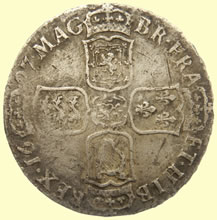  |
 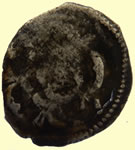 |
||
1697 William III milled silver half crown (30 pence) 14.92g,32.8mm |
1625-42 Charles 1st hammered silver half penny - Rose each side - no legend type 0.18g,9.45 |
||
Size comparison farthing to Medieval penny Smallest hammered silver coin I have seen dug - First ever rare Henry VIII hammered silver farthing we have ever found 7.69 mm,0.13g 1526-44 Henry VIII hammered silver farthing - 2nd coinage - Arrow mint mark - London Obv Portcullis within circle, im arrow Rev Rose on long cross Obv RVTILANSxROSA Rev DEO GR ACI AS |
|||
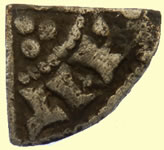  |
  |
||
1247 Henry III hammered silver voided long cross farthing Rev NT - Canterbury mint |
1327-1335 Edward III hammered silver penny - First issue Florin type Anulet stops in Obv legend Obv +EDWR o ANGL o DNS o HYB Rev CIVI/TAS/LON/DON - London mint |
||
 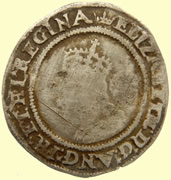 |
  |
||
| 1568 Elizabeth 1st hammered silver sixpence | 1649 Commonwealth hammered silver half groat | ||
 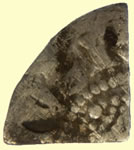 |
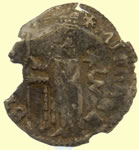  |
||
1247 Henry III hammered silver voided long cross farthing Rev EM - Moneyer Ieremie |
Type 1 Doge Michele Steno (1400-1413) Venetian soldino silver coin .
Doge standing left, holding banner, * / m in right field |
||
Very unsual Saxon harness fitting with circule enameled design- Sent to museum for their views
|
|||
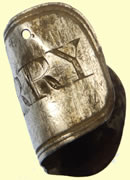 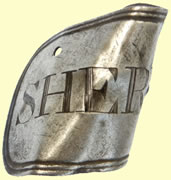 |
 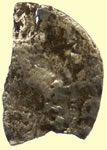 |
||
| Victorian silver Sherry bottle marker | Medeival hammered silver long cross penny fragment | ||
Great double busted Roman silver sent for ID - needs a good cook to remove crust I’m going to need to see this one as it progresses, but on the basis of the family resemblance of the portrait and the fact that the obverse legend appears to be counter-clockwise, it seems very likely to be one of the earlier Julio-Claudians – Julius through Claudius. Send me photos when it’s been cleaned a bit, and I can probably tell you a lot more when the “reverse” becomes legible and/or the portrait on the reverse is clearer and more recognizable . |
|||
 |
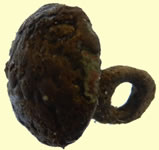 |
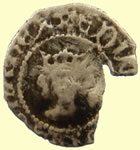 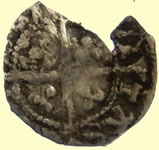 |
|
| Army button | 16thC Tudor button | 1480-3 Edward IV hammered silver half penny - Heradic cinquefoil mint mark - London mint Obv +EDW****A REX |
|
Roman silver fragment sent for ID I can’t be 100% certain on the basis of so little, but there were very few denarius-issuing emperors who used “COS VIII (or VIIII?) in their coin legends. |
|||
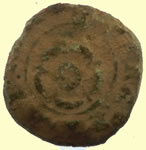  |
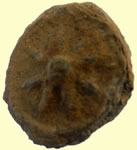 |
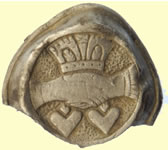 |
|
| 1636 Charles 1st hammered copper rose farthing | 17thC button | 17thC silver button - reported as treasure to museum | |
|
  |
||
| Medieval strap end | 17thC Charles 1st trade weight - Crown C cipher | ||
  |
|||
| Huge Georgian fob seal | |||
 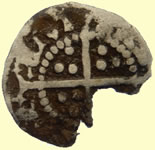 |
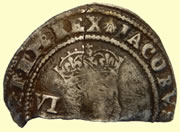 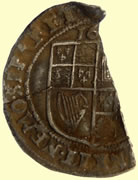 |
||
1533- 56 Henry VIII hammered silver half penny - Archbishop Thoman Cranmer - TC at sides of bust OBV hxDxGxROSAxSIExSPIA Rev CIVI/TAS/CAN/TOR - Canterbury mint |
1606-7 James 1st hammered sailver sixpence - Escallop mint mark | ||
 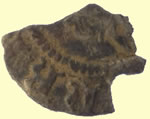 |
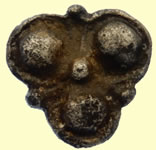 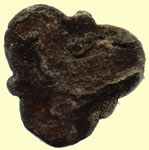 |
||
| 1422-61 Henry IV hammered silver penny Obv ENR*** Rev /SIE - Calais mint |
16thC Tudor silver mount - reported as treasure to museum | ||
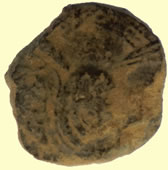  |
|||
Interesting Roman bronze sent for ID This one appears to be a contemporary copy. You had the obverse photo upside-down. After rotating it, you can see that it’s sort of a ¾ left-facing bust, and not of a form that I’ve ever seen on an official Roman coin before. The reverse, I believe, is copied from the VIRTVS EXERCITI centenionales of ca 395-401, by Arcadius and Honorius, featuring Victory reaching up to crown a facing image of the emperor – like this: Or it might have been inspired, (like this one, also a contemporary copy) of the “hut” type of FTR majorina: I also have an example of another contemporary copy of the VIRTVS EXERCITI from northern Africa – Vandalic, probably, like this: So you can see there are several possibilities for the prototype. It didn't commonly happen, but contemporary copies occasionally borrowed, copied and mixed devices from more than one single coin-type. |
|||
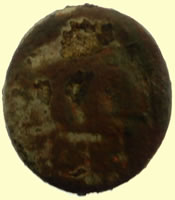  |
 |
||
| Doubel sided Georgian fob seal matrix - needs cleaning | 17thC William III trade weight - Crown W cipher | ||
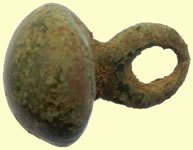 |
 |
 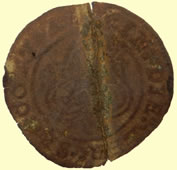 |
|
| 16thC Tudor button | Georgian button | 586 Hans Krauwincel II Rose orb Jetton HANNS KRAVWINCKEL IN NVRENB |
|
  |
 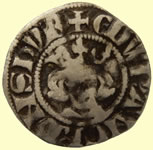 |
||
| 1696 William III milled silver sixxpence | 1280 Edward 1st hammered silver penny - open C&E - Egg wasted S -Class 3 Obv + EDWR' ANGL' DNS hYB Rev CIVI/TAS/LON/DON- London mint |
||
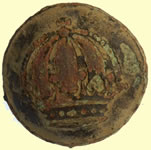 |
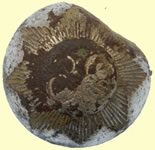 |
||
| WW1 Prussian Army button | In your numbered section under 33 you have two buttons there that are actually the East Essex Militia, its two fancy E's rather than 3's. The East Essex Militia were formed in 1759 and became the Essex Rifles Militia in 1853 during this period they had five styles of known button of which this is the fourt, so date wise you can go 1760-1853 or probably for this style c1810 Steve |
||
 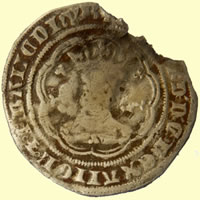 |
  |
||
1351 -52 Edward III hammered silver groat - series C letters C&E closed-Cross 1 Obv ****D'DG REX ANGL oZo FRANC D hYB Rev CIVI/TAS/EBO/RACI - York mint |
1356 -61 Edward III hammered silver groat- series G Annulet in quadrant reverse cross - letters C&E closed -Cross 3 Obv +EDWARD oDo Go REX ANGL** FRANC oD' hYB Rev CIVI/TAS/LON/DON- London mint |
||
 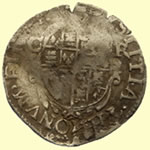 |
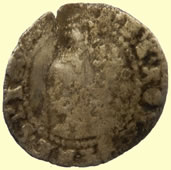 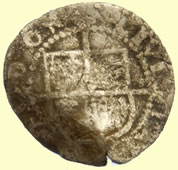 |
||
| 1625 Charles 1st hammered silver penny | 1582-3 Elizabeth 1st hammered silver half groat - Bell mint mark | ||
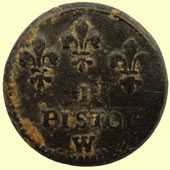 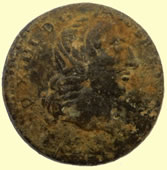 |
 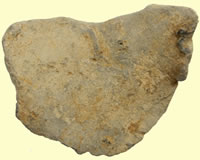 |
||
c1690 British coin weight for the French pistole gold coin Three Lis not in a shield type |
Interesting medieval lead item Edward cross with serpent like an S- pilgrims ampulla size |
||
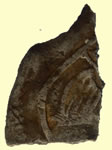  |
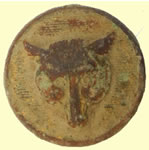 |
 |
|
| 17thC James 1st hammered silver half groat fragment | 19thC hunting button | 15thC lead token | |
 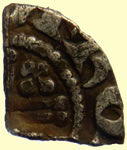 |
  |
||
| 1216 Henry III hammered silver short cross farthing | 1509-26 Henry VIII hammered silver half penny - Cross fourchee - wide hair Obv hENRIC***X Single arched crown Rev CIVI/TAS/LON/DON- London mint |
||
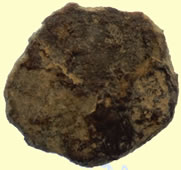  |
|||
Interesting Roman bronze sent for ID I think you’re mistaking the reverse for the obverse on this one. That little altar with skewed perspective and a multi-line Vota dedication, Globus Terrarum atop it and 3 stars above the globe symbolizing Constantine I and his 2 oldest sons, is the reverse. It will have one of several minor spelling variations of BEATA TRANQVILLITAS (blessed peace) for the concentric legend and one of a few variants of the letter arrangement in the Vota. They were struck only for the earliest Constantinians – Crispus is often on the obverse of these. I don’t think we’re going to be able to tell from what’s left of the obverse of yours who is on this one, but the Vota dedication being VOT / I S / XX, I’m going to guess it’s most likely to have been struck for Crispus, Constantine I’s unfortunate first son, who is most commonly seen on these – like this: |
|||
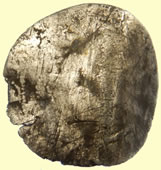  |
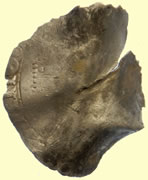  |
||
| 1571 Elizabeth 1st hammered silver half groat | 1554 Mary hammered silver groat | ||
 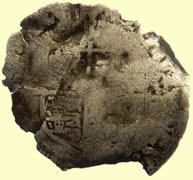 |
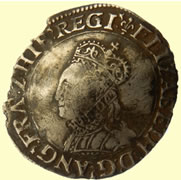  |
||
| 16thC Elizabeth 1st hammered silver penny | 1558-1560 Elizabeth 1st hammered silver groat (4 pence) Lis mint mark | ||
  |
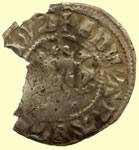 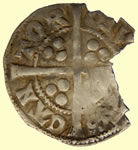 |
||
1247 Henry III hammered silver voided long cross halfpenny Rev ION/CA - Canterbury mint |
1279 Edward 1st hammered silver penny Obv +EDWAR ANGL ***hYB Rev CIVI/TAS/CAN/TOR - Canterbury mint |
||
  |
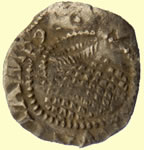 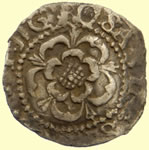 |
||
| 1838 Victoria milled silver four pence | 1603 James 1st hammered silver half penny | ||
|
 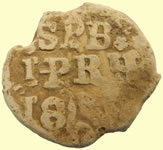 |
||
| Medieval strap end | Post medieval lead Russian bale seal | ||
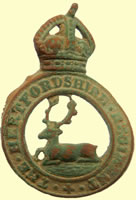 |
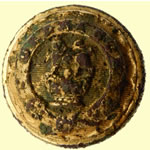 |
 |
 |
| WWI The Royal Hertfordshire Regiment cap badge | Unknown Army button ? | RN Capt / Commander - 1787 RN Lieutenant - 1787 |
16thC Tudor button |
Unknown Victorian widget - Diamond registration mark on blade - 1842-1883 |
|||
 |
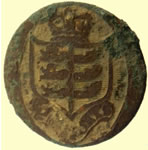 |
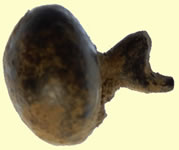 |
|
Irish regiment, Wicklow forresters - 1st July 1779 The Wicklow Militia was formed in 1793. The militia’s history can be read in Edward Benjamin Evans’ book, An Outline of the History of the County Wicklow Regiment of Militia… |
Unknown Army button ? | 16thC Tudor button | |
Oh boy, this one is easy – I didn’t even need to enlarge the thumbnail. This is part of the coinage created by Marcus Antonius – Marc Antony - to pay his troops and marines. They were minted in anticipation of the battle of Actium ca 32 BC. He lost the battle rather badly to a superior naval force led by Agrippa. This historic upset of power paved the way for Augustus to create the Empire out of the shambles of post civil-war Republican Rome and was the primary reason for his and Cleopatra’s suicide. |
|||
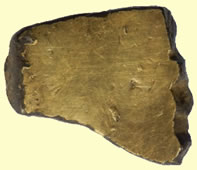  |
 |
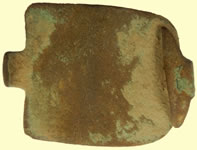 |
|
| Medieval gilded copper clasped hands ring fragment | 18thC clog fastener | 18thC clog fastener | |
 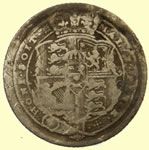 |
 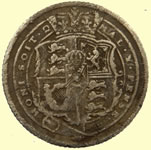 |
||
| 1816 George III milled silver sixpence | 1817 George III milled silver sixpence | ||
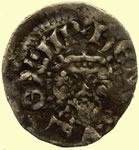 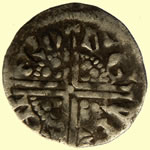 |
 |
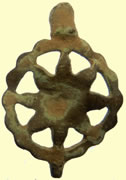 |
|
1247 Henry III hammered silver voided long cross penny - Class 3c Obc hENRICVS REX III'* Rev N/ERO/NE/VE - Moneyer Rener of York mint |
17thC crotal bell | Post medieval harness pendant | |
 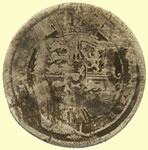 |
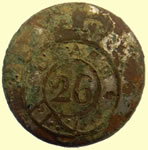 |
||
| 1819 George III milled silver sixpence | Officer - 1855-1881 26th Regiment of Foot |
||
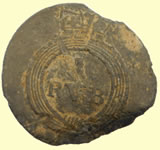 |
  |
||
| 1802- 1816 Royal Veterans Battalion
I RVB An other ranks version to the 1st RVB of uncertain date the unit served in Portsmouth, Gibraltar, Holland and Harwich where they were disbanded in 1814, reformed the following year they were disbanded in 1816 in Plymouth. |
Medieval long cross hammered silver penny fragment | ||
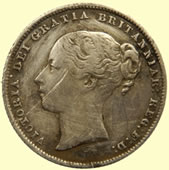  |
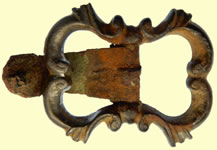 |
||
| 1865 milled silver shilling | Georgian spur buckle | ||
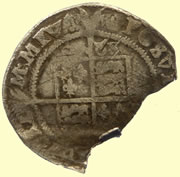 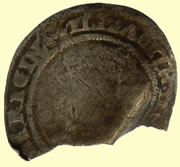 |
 |
||
| 1568 Elizabeth 1st hammered silver sixpence - Coronet mint mark | 18thC clog fastener | ||
Roman silver hoard coin - reported as hoard addendum to museum |
|||
  |
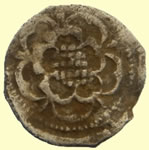 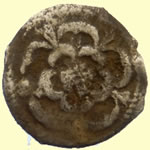 |
||
| 1697 William III milled silver half crown - 30 pence | 1625 Charles 1st hammered silver half penny - rose both sides, no legend type | ||
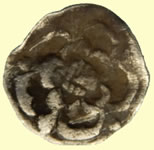 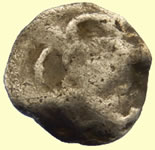 |
 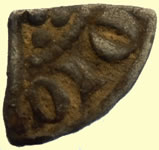 |
||
| 1625 Charles 1st hammered silver half penny - rose both sides, no legend type | 1247 Henry III hammered silver voided long cross farthing | ||
Size comparison |
|||
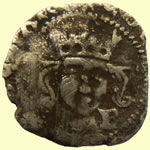  |
  |
||
| 1461-1470 Edward IV hammered silver penny - B by neck , class XIII-XVa Durham | 16thC Elizabeth 1st hammered silver six pence | ||
 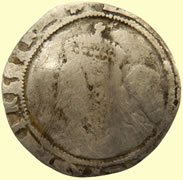 |
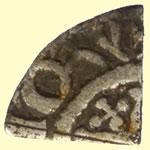  |
||
| 1575 Elizabeth 1st hammered silver six pence | 1216 Henry III hammered silver short cross farthing Rev /ORY/ - Norwich mint |
||
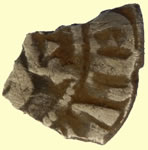 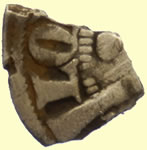 |
 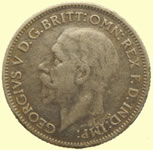 |
||
Medieval hammered silver long cross penny fragment Obv EDW**** Rev /LO - London mint |
1930 George V milled silver sixpence | ||
 |
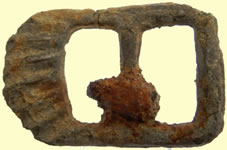 |
  |
|
| 15thC lead token | 1500-1650 buckle | Medieval hammered silver penny - quatrefoil with pellet at centre of reverse cross - York mint Obv REXoAN***** Rev TAS |
|
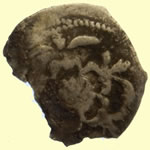 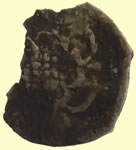 |
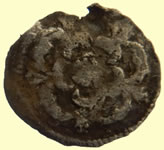 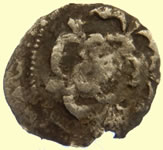 |
||
| 1625 Charles 1st hammered silver half penny - rose both sides, no legend type | 1625 Charles 1st hammered silver half penny - rose both sides, no legend type | ||
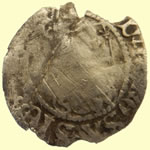 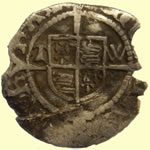 |
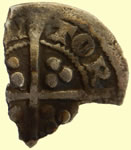  |
||
| 1526-44 Henry VIII hammered silver sovereign penny - (Duram) TW by shield Bishop Thomas Wolsey | Medieval Edward hammered silver long cross penny Ov ANGL Rev N/TOR - Canterbury mint |
||
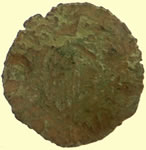 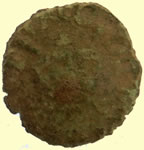 |
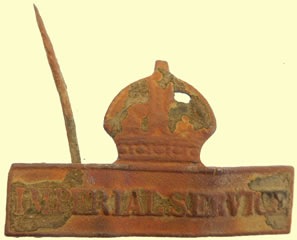 |
||
| 1636 Charles 1st Royal hammered copper farthing | British WWI Imperial Service badge The Territorial Force Imperial Service Badge was a short lived decoration of the United Kingdom awarded to those members of the Territorial Force who were prepared to serve outside the United Kingdom in defence of the Empire. The conditions of enlistment for the TF laid down at their creation in 1908 did not allow for soldiers to be sent for service overseas against their will, as the TF was intended for home defence. However, any man could volunteer for the Imperial Service Section and serve abroad in times of war, which entitled him to wear this badge The badge was worn on the uniform immediately above the right breast pocket, i.e. the opposite side to any medal ribbons. The majority of those who received the award did so for services during the First World War.
|
||
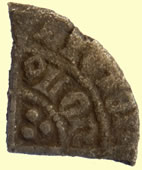 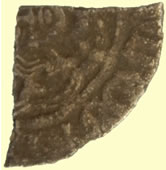 |
 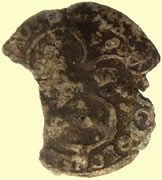 |
||
1422 -61 Henry VI hammered silver qtr groat - mascule issue mascule before LON Rev /LON/DON - London mint |
Szóstak / 6 Groszy - Jan III Sobieski Bydgoszcz mint
- Polish–Lithuanian Commonwealth
Obverse Lettering: IOAN III DG REX POL M D L R P ReverseLettering:
|
||
 |
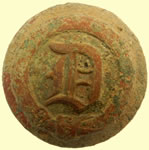 |
  |
|
| 16th Tudor button | 19thC livery button | Georgian hanging silver pendant with stone | |
  |
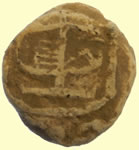  |
||
| Georgian fob seal holder | Post medieval lead cloth seal | ||
  |
  |
||
1199 John hammered silver short cross half penny - Class 5 Obv **SANDRE** - Moneyer Alisander |
1247 Henry III hammered silver voided long cross half penny | ||
 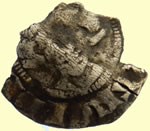 |
 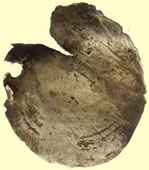 |
||
Medieval Edward hammered silver long cross penny Obv ANGL**** Rev /TAS |
16thC Elizabeth 1st hammered silver half groat | ||
  |
 |
||
| Post medieval lead bale seal | 15thC casket key | ||
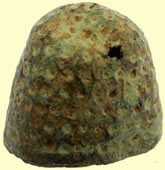 |
 |
  |
|
| 15thC thimble | O/R's - 1855-1881 43rd LIGHT INFANTRY. / After 1881 :- 1st Battalion The Oxfordshire & Buckinghamshire Light Infantry) |
1279 Edward 1st hammered silver penny Obv **R ANGL DNS hYB Rev IE/VILL/A - Bristol mint |
|
What a great relic - Huge lead Heraldic crest, normally mounted on carriage doors Need reserching to ID family crest
|
|||
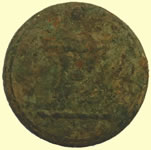 |
 |
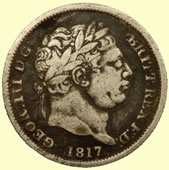 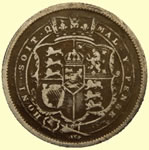 |
|
| 19thC livery button | 15thC lead token - type 2 | 1817 George III milled silver shilling | |
 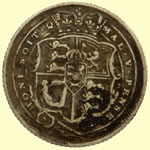 |
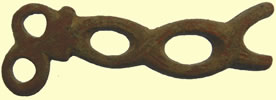 |
||
| 1817 George III milled silver sixpence | Georgian spur fragment | ||
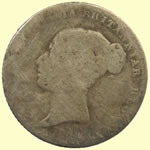 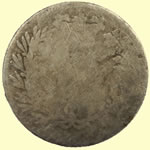 |
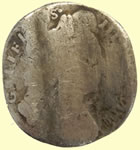  |
||
| Victoria milled silver sixpence | 17thC William III milled silver sixpence | ||
 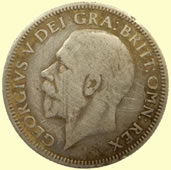 |
 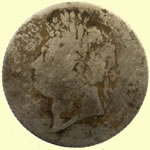 |
||
| 1929 George V milled silver shilling | 1831 George IV milled silver sixpence | ||
 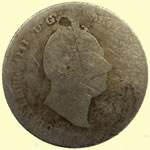 |
  |
||
| 1836 William IV milled silver four pence | 1836 William IV milled silver four pence | ||
  |
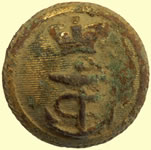 |
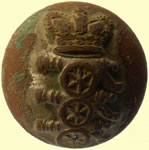 |
|
| 1913 George V milled silver sixpence | Royal Navy - Officers (Roped Rim) Lined Background - 1843-1891 | Royal Artillery button Dates - 1840 - 1855 |
|
1 Vintem= 20 Reais (20) Portuguese hammered silver coin 1501-1521 Vintém - Manuel I Crowned M with "o-oL" at each side, Lisboa mint
ObverseLettering: ReverseLettering: I:EMAИVEL;R:P:ET:A:D:G
|
|||
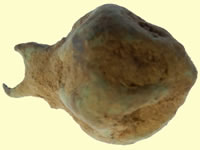 |
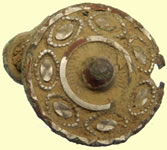 |
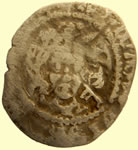  |
|
| 16thC Tudor button | Georgian button | 1470-1471 Henry VI hammered silver penny - 2nd reign, quatrefoil at centre of reverse G & Key by bust Rev CIVI/TAS/EBO/RACI - York mint
|
|
Celtic silver unit - looks like a Cunoblein Griffin type - needs a good cook to remove crust |
|||
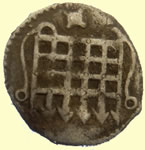 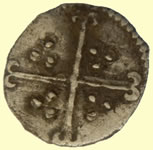 |
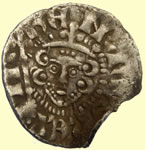 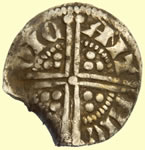 |
||
| 1594-6 Elizabeth hammered silver halfpenny - Woolpack mint mark | 1247 Henry III hammered silver voided long cross penny Obv hENRICVS REX III Rev ANC/ANT/NIC - Moneyer Nicole of Canterbury mint |
||
  |
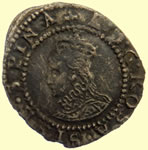 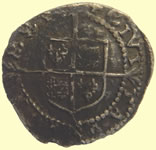 |
||
| 1739 George II milled silver penny | 1578-9 Elizabeth 1st hammered silver penny - Greek cross mint mark | ||
 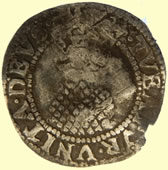 |
  |
||
| 1623-4 James 1st hammered silver half groat - Lis mint mark | Medieval hammered silver farthing | ||
 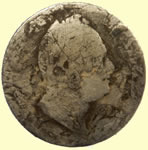 |
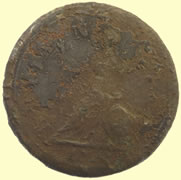 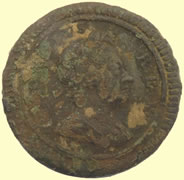 |
||
| 1837 William III milled silver sixpence | 1720 George 1st milled copper farthing - 2nd issue | ||
 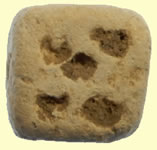 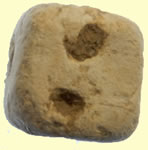 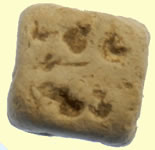 |
|||
| Tiny Roman lead dice | |||
  |
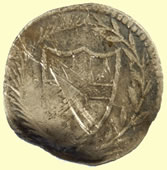 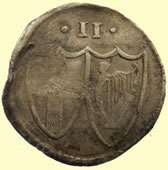 |
||
| 1666 Thomas Peeke of Colchester Essex hammered copper trade farthing | 1649 Commonwealth hammered silver half groat | ||
Miss Jeff eyeballed a Circa 11000 BC Middle Stone Age (Mesolithic) flint axe head |
|||
Celtic silver unit - looks like a Cunobelin - needs a good cook to remove crust 1.51,14.49mm |
|||
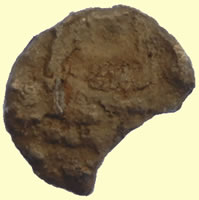  |
|||
Primary Saxon silver sceat 600- 700 AD - sent to Fitzwilliam museum for ID and recording Reported as potential hoard to museum Many thanks for this new Series D (Type 8) sceat, which I have recorded as EMC 2017.0330. Martin 0.76g,11.59 |
|||
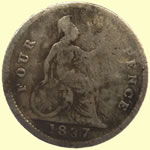 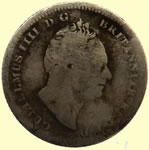 |
 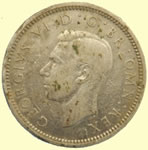 |
||
| 1837 William IV milled silver four pence | 1938 George VI milled silver sixpence | ||
 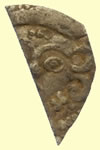 |
 |
 |
|
| 1247 Henry III hammered silver voided long cross hal penny | 1500-1700 mount | 1500-1700 mount | |
 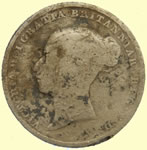 |
  |
||
| 1839 Victoria milled silver sixpence | Medieval Edward hammered silver penny fragment Obv B+EDW ** Rev VIL - Villa type coin |
||
 |
 |
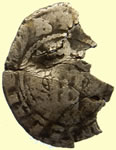 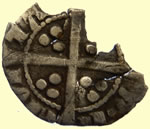 |
|
| Victorian General Post Office button | 1500-1700 hooked mount | 1279 Edward 1st hammered silver penny Obv DNS hYB Rev CIVI/TAS/**/DON - London mint |
|
|
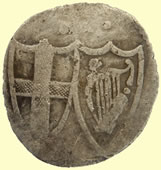 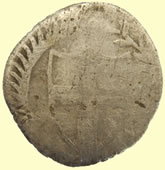 |
||
| 18thC clog fastener | 1649 Commonwealth hammered silver half groat | ||
Roman silver coin - sent for ID - needs cooking to remove crust Chris, |
|||
 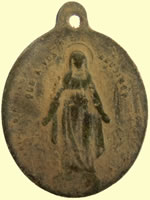 |
  |
||
| Victorian religious medallion | Victorian cruifix | ||
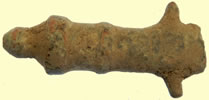 |
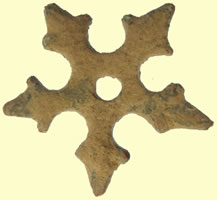 |
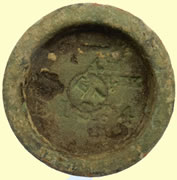 |
|
| 18thC toy cannon | Medieval spur rowel | Victorian trade weight | |
|
 |
 |
|
| Victorian silver brooch marked Sterling silver | MN - G & J Burns Ltd In use 1842 - 1922 | 1500-1700 buckle | |
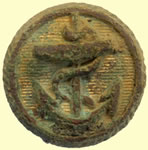 |
 |
  |
|
| Generic merchant navy button | Early medieval lead token | Medieval cast copper alloy bar mount. The main body is cirulcar with large central openwork hole. | |
 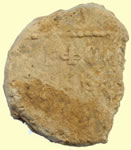 |
  |
||
| Post medieval lead bale seal | Medieval hammered silver penny fragment | ||
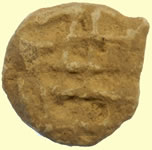 |
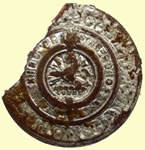 |
 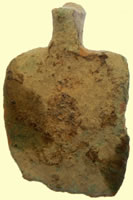 |
|
| Medieval lead token | 20thC Scania 'Kings of the road' badge | Medieval harness pendant | |
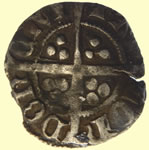 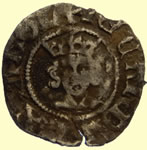 |
  |
||
1377-1399 Richard II hammered silver half penny Obv + RICARD REX x ANGL' Rev CIVI/TAS/LON/DON- London mint |
1216 Henry III hammered silver short cross fhalf penny Class 6d - Letter N pellet on cross bar Obv +TOMAS - Moneyer Tomas |
||
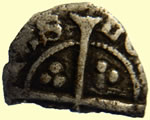 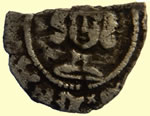 |
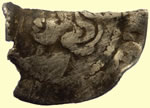 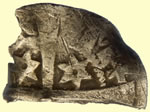 |
||
1279 Edward 1st hammered silver half penny Obv SxREX**** Rev TAS/DO - London mint |
1280- 1286 Alexander III Scottish hammered silver half penny | ||
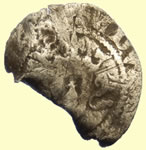 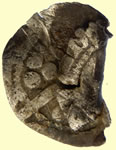 |
  |
||
1279 Edward 1st hammered silver penny Obv EDW*** |
Post medieval lead cloth seal | ||
Our first ever Uninscribed Corieltauvi North Eastern gold - 'Ferriby' type gold stater - Contemporary forgery 'excessively rare Celtic gold coin' Ref Hobbs 3167 |
|||
Jurassic period 200 million year old sea urchin star fish fossil |
|||
Circa 11000 BC Middle Stone Age (Mesolithic) flint axe head |
|||
2000 BC Early Bronze Age flat axe
|
|||
 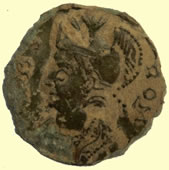 |
 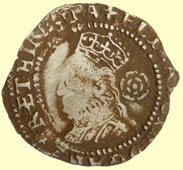 |
||
Mid 4thC Roman sent for ID Shewolf & Twins reverse which is typically found on the VRBS ROMA, City of Rome commemorative, reduced-module folles introduced around 330 AD., at the time Constantinople became the official seat of Constantine's government. These have a helmeted and mantled bust of the allegorical personification of the City of Rome facing left on their obverses. |
1579 Elizabeth hammered silver three pence - Greek Cross mint mark | ||
  |
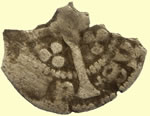 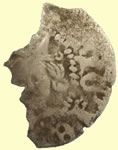 |
||
| 1636 Charles 1st hammered copper rose farthing | 1413-22 Henry V hammered silver penny Broken annulet by crown, satire after TAS Rev TAS+/EB - York mint |
||
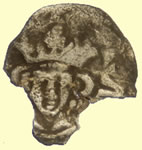 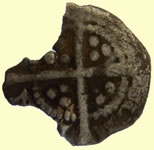 |
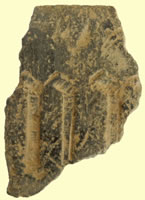  |
||
1280 Edward Ist hammered silver farthing - Type 10 - bust to edge of flan Obv +ER *** Rev LON/DON/IEN/SIS London mint |
Part of a scroll from a monumental brass dated c.1450 | ||
  |
 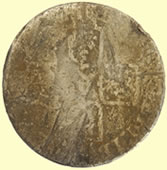 |
||
| Medieval lead trade weight | 1704 Anne milled silver shilling | ||
 |
 |
  |
|
| 18thC Royal Artillery button | Georgian watch winder | Post medieval chaffing dish handle | |
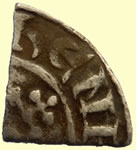 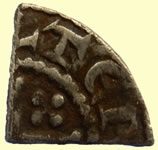 |
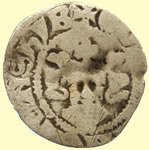  |
||
1216 Henry III hammered silver short cross farthing Rev TER - Moneyer Walter |
1279 Edward 1st hammered silver penny Obv +ED***DNS hYB Rev DON/CIVI/*** London mint |
||
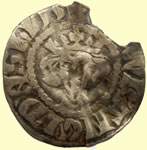 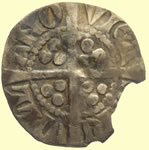 |
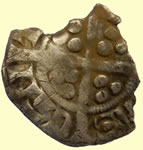 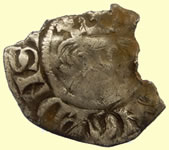 |
||
1280 Edward 1st hammered silver penny - Class 3e - long narrow face Obv +***WR ANGL DNS hYB Rev VILL/ANO/VICA/**RI - Newcastle mint |
1280 Edward 1st hammered silver penny - egg wasted S - Class 3f to 8a Obv *** NGL DNS hYB Rev AS/CAN/T** Canterbury mint |
||
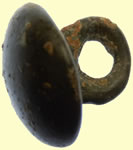 |
 |
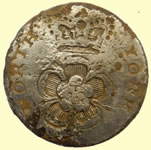 |
|
| 16thC Tudor button | 17thC Charles II silver button - reported as treasure to museum | c1794-1814 North York Militia Crowned Yorkshire Rose with 'North' and 'York' either side In 1763 various local battalions were amalgamated to form the North Riding Militia through various name changes they eventually form the 4th Battalion of the Yorkshire Regt. |
|
1891 Victoria British Guiana West Indies milled silver four pence medallion |
|||
1356 Edward III hammered silver penny - pre treaty series F - annulet after EME -Crozier before CIVI Crown mint mark Rev CIVI/TAS/DVR/EMEo - Durham mint
|
|||
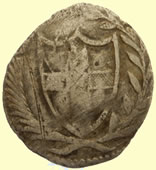  |
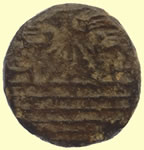  |
||
| 1649 Commonwealth hammered silver half groat | 15th/16thC British Gold Nobel coin weight - Ship type | ||
 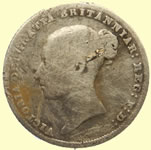 |
  |
||
| 1857 Victoria milled silver sixpence | 19thC Victoria milled silver sixpence | ||
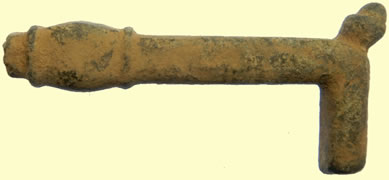 |
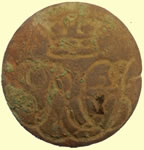 |
 |
|
| Medieval chaffing dish handle | Unknown Army button ? | c1910 badge The Ancient Order of Foresters is one of the oldest friendly societies, with its origins in Yorkshire in the 1790s. Philanthropy and virtue featured prominently in the principles and ritual of the Society. ‘The object of Forestry is to unite the virtuous and good in all sects and denominations of man in the sacred bonds of brotherhood so that while wandering through the Forest of this World they may render mutual aid and assistance to each other |
|
  |
 |
||
| Post medieval lead bale seal | 17thC button | ||
20thC silver ring with clear stones
|
|||
Cracking silver seal picuture sent from the field
Georgian silver and stone seal matrix |
|||
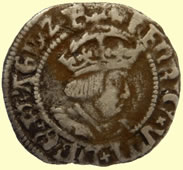 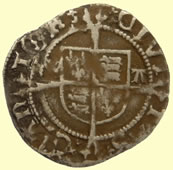 |
  |
||
1526- 32 Henry VIII milled silver half groat - Cross patonce initial mark WA by shield Archbishop William Warham - Ref JJ North 1802 Obv HENRIC VII DI GRA REX AGL Z FRA Rev CIVI/TAS/CAN/TOR - Canterbury mint |
1377 Richard II hammered silver half penny Obv **ANGL Rev /DON - London mint |
||
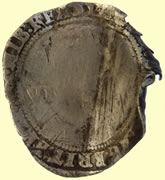  |
  |
||
| 1605 James 1st hammered silver sixpence | 1216 Henry III hammered silver short cross half penny | ||
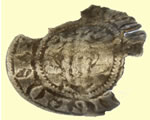 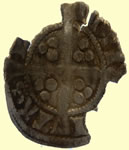 |
 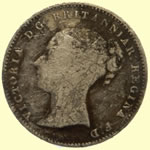 |
||
1279 Edward 1st hammered silver penny Obv ED**ANGL DNS * Rev I/TAS/L**/DON - London mint |
1859 Victoria milled three pence | ||
 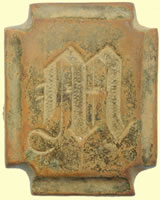 |
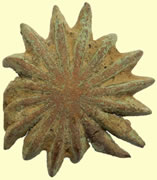 |
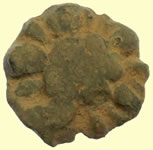 |
|
| 1500-1700 mount | 1500-1700 mount | 1500-1700 mount | |
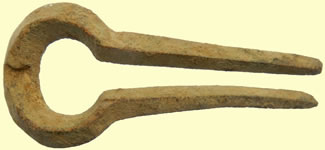 |
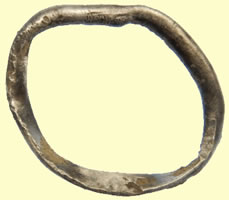 |
||
| Georgian jews harp | Plain silver ring - no hall marks | ||
  |
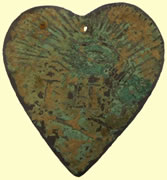 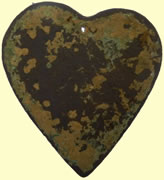 |
||
| 1554 Mary hammered silver grat fragment | 17thC religious medallion | ||
 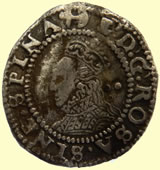 |
 |
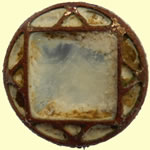 |
|
| 1598-1600 Elizabeth 1st hammered silver half groat- anchor mint mark | 16thC Tudor button | Georgian button | |
  |
 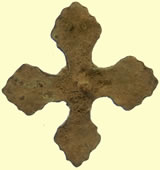 |
||
| 1768 Dutch ZelanDia copper coin | Medieval mount | ||
 |
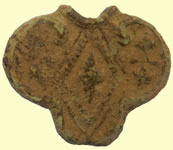 |
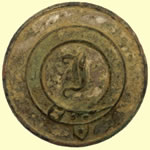 |
|
| 17thC Charles II silver button - reported as treasure to museum | Georgian watch winder | 19thC livery button | |
 |
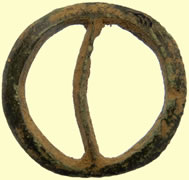 |
 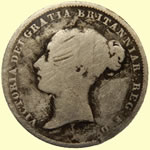 |
|
| 1500-1650 buckle | 1500-1650 annular buckle | 1851 Victoria milled silver sixpence | |
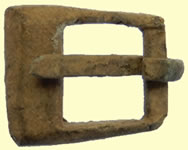 |
  |
||
| Medieval buckle | Georgian measuring bowl | ||
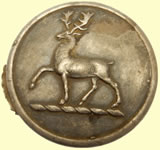 |
 |
 |
|
| 19thC livery button | RN Capt / Commander - 1787 RN Lieutenant - 1787 |
18thC crotal bell | |
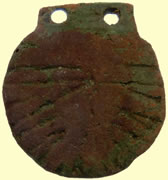  |
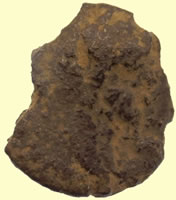  |
||
| Early decorated copper mount | 2ndC Roman silver coin - needs cooking to remove crust | ||
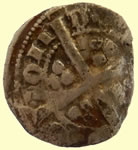  |
  |
||
1279 Edward 1st hammered silver penny Obv +EDWAR ANGL DNS hYB Rev CIVI/TAS/LON/DON London mint |
1827 Russian lead bale seal | ||
c10thC Saxon gilded disc brooch |
|||
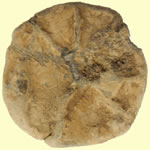 |
 |
 |
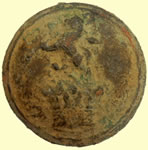 |
| 15thC lead token | 15thC lead token | Early Post-Medieval copper alloy openwork lozengiform mount | 19thc livery button |
 |
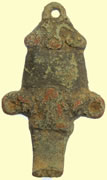 |
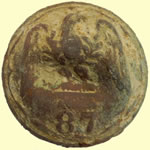 |
 |
| A Medieval (1250-1450) sheet copper alloy domed sexfoil belt mount | 17thC clothing fastener | 87th Regiment of Foot O/R's (Brass) - 1855-1881 |
1500-1700 mount |
 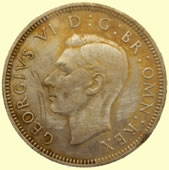 |
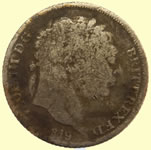 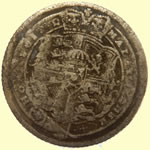 |
||
| 1939 George V milled silver shilling | 1819 George III milled silver sixpence | ||
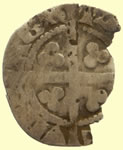 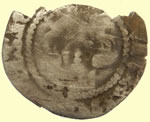 |
|
||
1279 Edward 1st hammered silver penny Obv ***R ANGL DNS hY Rev VILL/ABR/I - Bristol mint |
Medieval ear wax scraper | ||
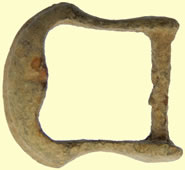 |
 |
  |
|
| 19thC buckle | Edwardian brooch | 1461-4 Edward IV hammered silver half penny - Heavy coinage -Trefoils by neck both sides Obv *** DI GRA RE Rev TAS/L** London mint |
|
Early medieval gilded mount |
|||
 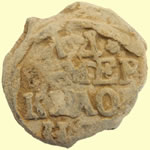 |
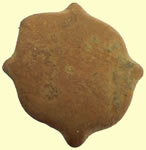 |
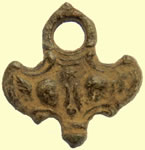 |
|
| 1817 Russian lead bale seal | 1600-1700 A copper-alloy cast mount. The mount is quatrefoil in shape with a cusp in each angle. The reverse has two attachment lugs |
Georgian watch winder | |
 |
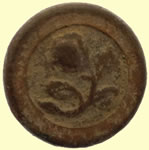 |
 |
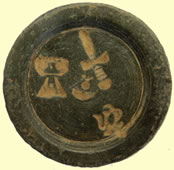 |
1600-1700 A copper-alloy cast mount. The mount is quatrefoil in shape with a cusp in each angle. The reverse has two attachment lugs |
Georgian button | 19thC livery button | 1704 Anne trade weight - Crown A cipher |
  |
 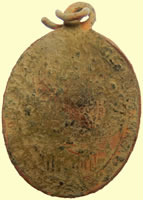 |
||
| Gold Georgian watch winder | Victorian religious medallion | ||
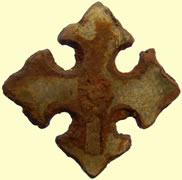 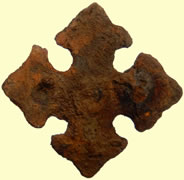 |
|
||
| Medieval mount | 1896 Birmingham silver name tag 'Fanny' Maker S.B Samuel Baker |
||
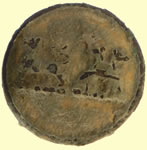 |
 |
 |
|
| 19thC livery button | Georgian furniture mount | Georgian barrel tap and spigot | |
  |
 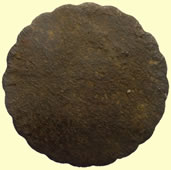 |
||
| 1558 Elizabeth 1st hammered silver groat | George III gold half guinea gaming token | ||
Huge 1792 Louis XVI French 2 SOLS copper, great shape 1/8 inch thick |
|||
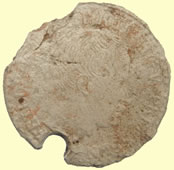 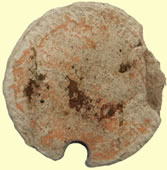 |
 |
 |
|
| 18thC Continental billion silver coin | Early Post-Medieval copper alloy openwork lozengiform mount | 1500-1700 mount | |
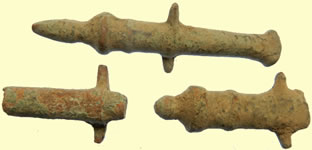 |
 |
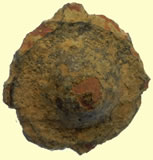 |
|
| 18thC toy cannons | 1500-1700 mount | 1500-1700 mount | |
  |
 |
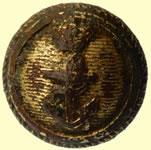 |
|
| 177? 1/4 Stuber, Julich-Berg (German States) | 1500-1650 buckle | RN Capt / Commander - 1812 | |
 |
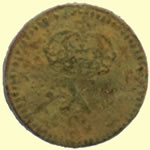  |
||
| WW1 Army Surrey regiment lapel badge | 1604-19 James 1st angel coin weight - 2nd coinage | ||
 |
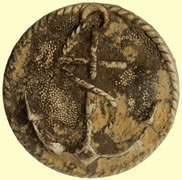 |
|
|
| Victorian trade weight | 20thC alloy navel button | Georgian spur | |
  |
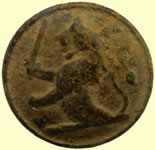 |
 |
|
1247 Henry III hammered silver voided long cross half penny - Class II to IIIc Rev WIZ/hV - Moneyer Hvge of Norwich mint |
19th livery button | 19th livery button | |
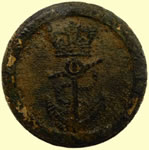 |
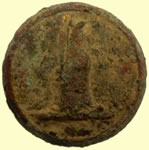 |
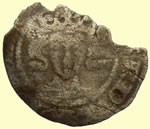 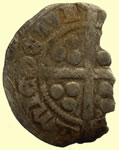 |
|
RN Capt / Commander - 1812 |
19th livery button | 1351-61 Edward III hammered silver penny - Pre treaty Obv ***RD Rev LMIE/CIVI - Durham mint |
|
  |
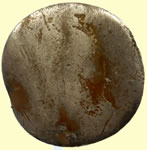  |
||
| 1824 George IV milled silver sixpence | 1696 William III milled silver sixpence - love token | ||
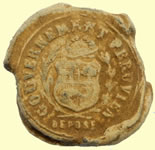 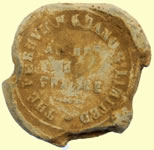 |
|||
Post medieval lead Peruvien bale seal A lead seal of the 'bulla' type from a bag of Peruvian guano (fertiliser made from bird excrement). One side of the seal depicts the shield of arms of Peru. It has the inscription GOUVERNEMENT PERUVIEN around, and DEPOSE below. The other side is inscribed THE PERUVIAN GUANO Co LIMITED around, and AGENCE DE FRANCE in three lines in the centre. |
|||
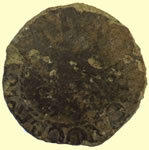 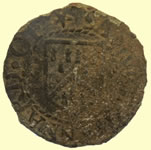 |
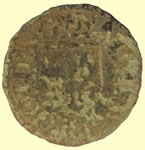 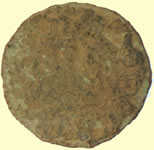 |
||
| 17thC hammered copper trade farthing Obv *NNARD OF SA** Grocer | 17thC hammered copper trade farthing | ||
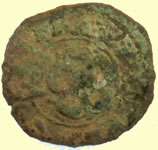  |
 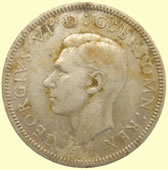 |
||
| 1636 Charles 1st hammered copper rose farthing | 1937 George VI milled silver shilling (12 pence) | ||
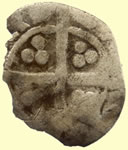 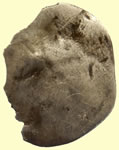 |
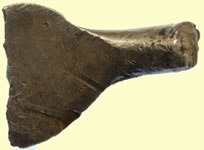  |
||
| Medieval hammered silver long cross penny | Unknown silver fragment - ring ? | ||
  |
 |
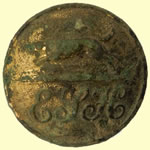 |
|
| 1852 Victoria milled silver sixpence | 16thC clothing fastener | 19thC liver button | |
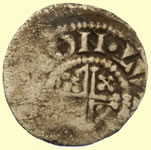 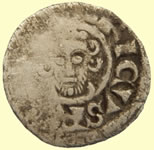 |
  |
||
1199 John hammered silver short cross penny Class 5 Rev ON.LV - London mint |
'This is a Bavarian reservist, called up for service late in 1914. He is wearing the standard 1910 Fieldgrey wool uniform with Brandenburg cuffs, piped in red, and the Stehumfallkragen (stand and fall collar), a very uncomfortable back pack and leather jackboots, unchanged since 1870. The outside seam of his Fieldgrey trousers would also have been piped in red. The buttons on his tunic have the Bavarian rampant lion in place of the Prussian crown' | ||
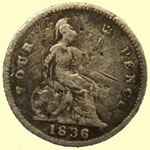  |
  |
||
| 1836 William IV milled silver four pence | 1841 Victoria milled silver sixpence | ||
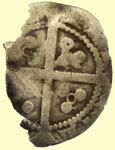 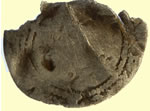 |
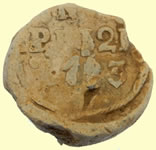  |
||
1422-27 Henry VI hammered silver penny - annulet issue annulet in 2 qtrs in reverse - annulet by neck on obverse Calais mint |
Post medieval lead Russian bale seal | ||
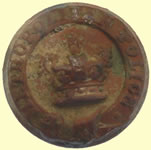 |
  |
||
| Victorian Metropolitan police button | 1933 George V milled silver sixpence | ||
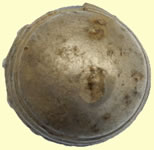 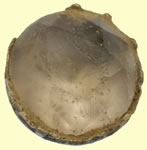 |
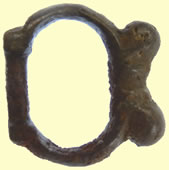 |
 |
|
| Georgian silver button with glass stone | Medieval buckle | 1500-1650 buckle | |
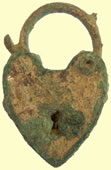 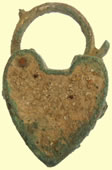 |
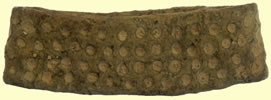 |
||
| Victorian locket | 15thC open topped thimble | ||
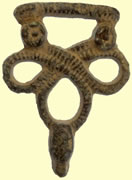 |
 |
 |
|
| 16thC Tudor clothing fastener | 18thC Royal Navy cuff link | Georgian silver spoon | |
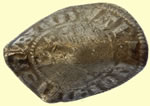 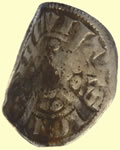 |
  |
||
1279 Edward 1st hammered silver penny Obv + EDWAR ANGL DNS hYB Rev CIVI/TAS/LON/DON- London mint |
Edwardian copper purse charm | ||
Medieval key |
|||
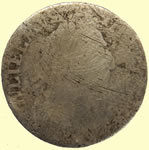  |
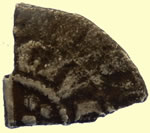  |
||
| 1696 William III milled silver sixpence | Medieval hammered silver long cross farthing | ||
  |
  |
||
| 1636 Charles 1st hammered copper rose farthing | 1636 Charles 1st hammered copper rose farthing | ||
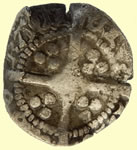 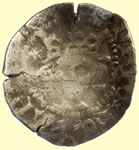 |
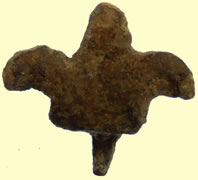 |
 |
|
1413 - 1422 Henry V hammered silver penny Mullet left and pellet right of crown Obv +hENRIC x REX ANGLIE Obv CIVI/TAS/EBO/RACI - York mint |
Medieval mount | 18thC clog fastener | |
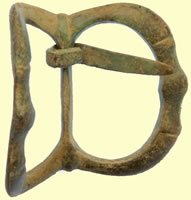 |
 |
 |
|
| Huge 1500 -1650 buckle | Georgian buckle | RN Master - 1807-1825
|
|
Victorian decorated gold item 14mm W, 0.75g |
|||
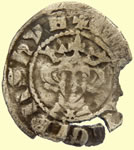 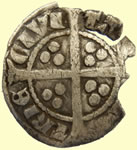 |
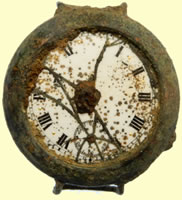  |
||
1299-1300 Edward 1st hammered silver penny - Star on breat - Class 9b Obv +ED**** ANGL DNS hYB Rev CIVI/TAS/CAS/TRIE- Chester mint |
20thC watch | ||
 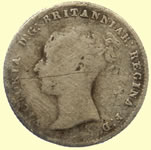 |
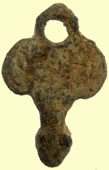 |
 |
|
| 1844 Victoria milled silver four epnce | Georgian watch winder | 18thC Royal artillery button | |
 |
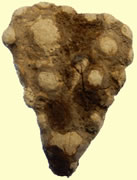 |
||
| Huge Georgian furniture mount | Early medieval lead mount | ||
Huge 17thC fretwork book mount ? |
|||
  |
  |
||
| 1900 Victoria milled silver sixpence | 1816 George III milled silver sixpence | ||
 |
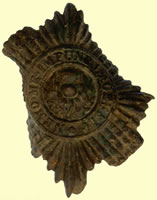 |
||
| WWII Royal field Artillery sweet heart badge | WWI Royal Scotts guards badge Nemo me impune lacessit was the Latin motto of the Royal Stuart dynasty of Scotland |
||
c10thC Saxon stirrup mount |
|||
  |
  |
||
1279 Edward 1st hammered silver penny Obv +EDWR ANGL DNS hYB Rev CIVI/TAS/CAN/TOR - Canterbury mint |
1485 Henry VII hammered silver halfpenny - single arched crown | ||
  |
 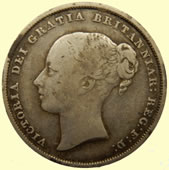 |
||
| 1897 Victoria milled silver three pence | 1856 Victoria milled silver shilling | ||
 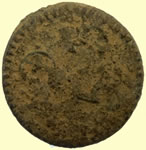 |
 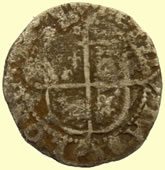 |
||
| 1770's 5 shillings and three pence coin weight - 1/4 gold guinea | 1601-02 Elizabeth 1st hammered silver half groat - 1 mint mark | ||
Medieval purse bar swivel |
|||
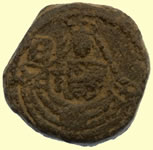 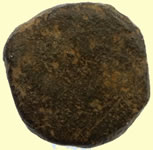 |
  |
||
| 14th/15thC Gold Ryal coin weight - shield in the boat type | 17thC Jonas Whale, baker of Colchester hammered copper trade farthing Norweb Ref 1234 |
||
Georgian Double sided seal ring - Continental Obv Crown SR Rev Susan 20.12mm dia,4.27g
Repaired broken ring |
|||
Fixed 1645 Charles 1st hammered silver shilling (12 pence)- Eye mint mark
Fixed 1247 Henry III hammered silver voided long cross penny Obv hENRICVS REX III Rev REN/AVD/ONL/VND/ - Moneyer Renavd of London mint |
|||
Fixed 1279 Edward 1st hammered silver penny Obv +EDWAR ANGL DNS hYB Rev CIVI/TAS/LON/DON London mint
Fied 1562 Elizabeth 1st hammered silver half groat - Pheon mint mark |
|||
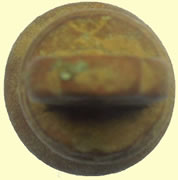  |
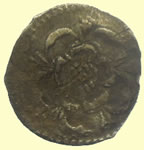 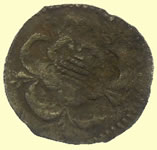 |
||
| Georgian bell weight | 1625 Charles 1st hammered silver half penny - rose both sides, no legend type |
||
  |
 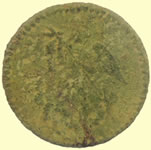 |
||
| 1619-25 Gold coin weight Half laurel of James I, 3rd Coinage | 1604-19 James 1st angel coin weight - 2nd coinage - 10 shillings | ||
1000 BC Bronze Age rolled gold sheet - disclaimed treasure find from British Museum 5.23g, 14mm L
Org Danny just unrolled his Bronze Age disclaimed gold treasure find - it is 8 inches long and has holes in each end indicating an open ended wrist armlet. It would be great to have to fixed and returned to a typical wrist band like below.
|
|||
  |
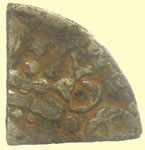  |
||
| Medieval vessica seal matrix fragment | 1247 Henry III hammered silver voided long cross farthing Rev OLE - Moneyer Nicole |
||
 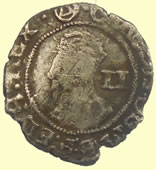 |
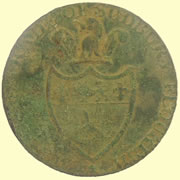 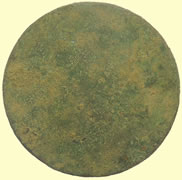 |
||
| 1641-3 Charles 1st hammered silver hald groat - Triangle in circle mint mark | 1793 Suffolk Sudbury Halfpenny Condor | ||
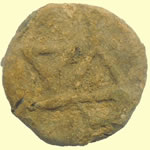 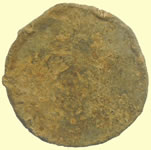 |
  |
||
| 16thC Elizabethan illegal tavern lead token | 16thC Elizabethan illegal tavern lead token | ||
 |
|
||
| 18thC toy cannon | Medieval pin | ||
  |
 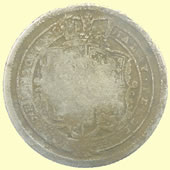 |
||
| 1571 Elizabeth 1st hammered silver sixpence | 1817 George III milled silver shilling | ||
  |
  |
||
| 4thC Roman copper coin | 1838 Victoria born May 1819 crowned June 1836 medal | ||
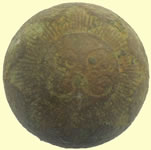 |
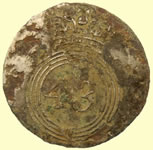 |
 |
|
In your numbered section under 33 you have two buttons there that are actually the East Essex Militia, its two fancy E's rather than 3's. The East Essex Militia were formed in 1759 and became the Essex Rifles Militia in 1853 during this period they had five styles of known button of which this is the fourt, so date wise you can go 1760-1853 or probably for this style c1810 Steve |
THE 43rd LIGHT INFANTRY. Officer - 1803-1830 |
Medieval mount | |
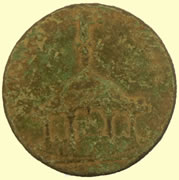 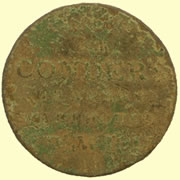 |
 |
||
1794 Ipswich copper conder token EDGE: Milled Issued for general circulation MINTAGE: 103,000 DIESINKER: Thomas Wyon MANUFACTURER: Peter Kempson "James Conder was a linen draper at Tavern Street, Ipswich. He was an ardent collector of tokens and the author of the standard work on the subject until it was superseded by that of Atkins in 1892. This is therefore the origin of the generic name of Conder Tokens for these pieces." David Stuart
|
94th regiment of foot The regiment was raised in 1793 from the men of Connacht by John Thomas de Burgh, 13th Earl of Clanricard. In 1881, the 88th (Connaught Rangers) Regiment of Foot (which formed the 1st Battalion) and the 94th Regiment of Foot (which formed the 2nd Battalion) were amalgamated. The amalgamation of the two regiments into one was part of the British Government's Childers Reforms of the British Armed Forces which was, in turn, a continuation of the Cardwell Reforms implemented in 1879. At that time five infantry battalions were given Irish territorial titles. |
||
BC Republican Roman silver - needs cooking to remove crust 17mm, 3.56g This one isn’t “Republican”, strictly speaking – it belongs to the vague, in-betweensy period typically called “Imperatorial”, but which is not all that well-defined in time. It ends, definitively, with the accession of Augustus to the Imperial throne in 27 B.C. – when, exactly, it starts depends on who you are asking, but this era contains the rules of Julius Caesar, Pompey, Marcus Antonius, The “Triumvirates”, etc. |
|||
Early medieval disc gilded disc brooch |
|||
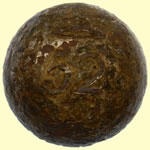 |
 |
 |
|
Officer - 1855-1881 The 52nd (Oxfordshire) Regiment of Foot was a light infantry regiment of the British Army throughout much of the 18th and 19th centuries. The regiment first saw active service during the American War of Independence, and were posted to India during the Anglo-Mysore Wars. During the Napoleonic Wars, the 52nd were part of the Light Division, and were present at most of the major battles of the Peninsula campaign, becoming one of the most celebrated regiments, described by Sir William Napier as "a regiment never surpassed in arms since arms were first borne by men". They had the largest British battalion at Waterloo, 1815, where they formed part of the final charge against Napoleon's Imperial Guard. They were also involved in various campaigns in India. |
Unknown button ? 'Portsoken' |
Medieval buckle | |
 |
|||
| 19thC livery button | |||
Crusty 10 -40 AD Cunobelin silver cleaning up- interesting to note how the very thin edge melted away in the 'cooker'
|
|||
1797 George III milled gold third guinea 2.82g, 17.07mm |
|||
Interesting bronze coin - reminds me of the Maravedis revalidated type coin ? Researching it.21mm, 4.34g 1600's Spanish Lion & Castle 8 Maravedis Cob
|
|||
Unique ID: DUR-1079B4
Roman prick spur A copper alloy Roman prick spur probably dating to the fourth century AD. The spur is made up of three projecting arms with approximately 90 degrees between each arm. On two of the arms are small loops and a break suggesting one on the third arm. There is a hexagonal area in the centre of the three arms and this is where the spur is attached. The spur is cone shaped. On each of the arms there is incised linear decoration. Spurs such as this example are thought to be of a British type and have been found in fourth and fifth century contexts. Although spurs are primarily military in character it is not unusual to find spurs of this type in rural locations. Similar examples have been recorded on the PAS database: DENO-8FB8E3 and LIN-D3B115.
|
|||
Check out 2017 Feb finds pageCheck out 2017 March finds pageCheck out 2017 Sept finds page |
|||
 |
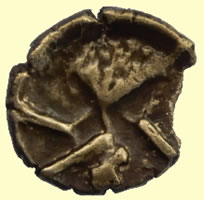
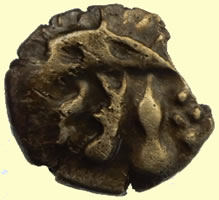

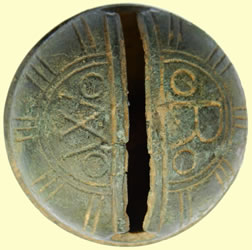




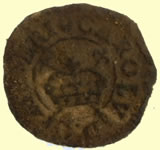
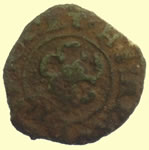
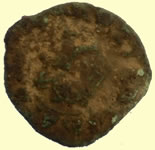


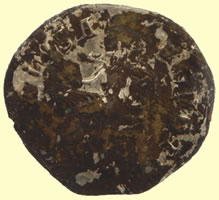
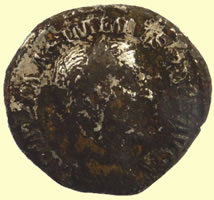

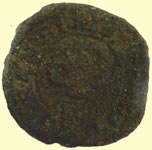
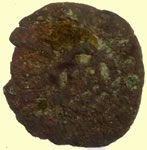
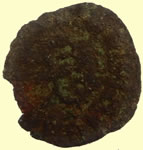

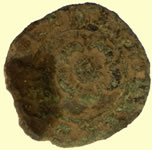
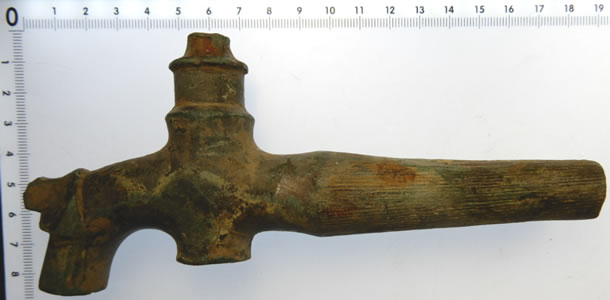
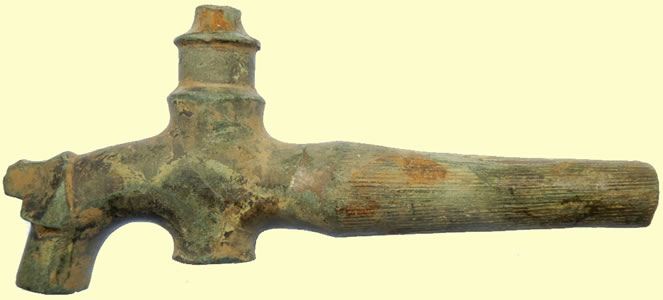


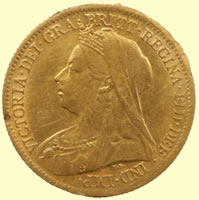

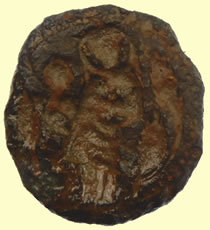






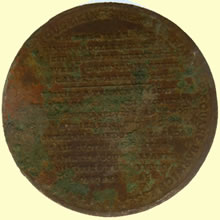


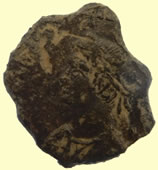
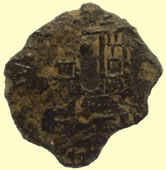

![39 Constantine II, Caesar,317-337 A.D. AR/Æ 3 Follis, 324-5 A.D. Mint of Cyzicus 17mm, 2.39gm, axis: 6:00 Obv: CONSTANTINVS IVN NOB C. Laureate draped and cuirassed bust left. Rx: PROVIDENTIAE CAESS. Campgate of 6 tiers, no door, 2 turrets, star above; in ex: SMK[A]. RIC VII 26, LRBC 1163, Cf. SR 3948, VM 38.](2017Septfinds2_clip_image002.jpg)


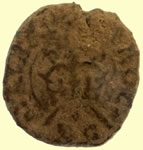
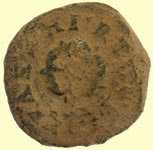

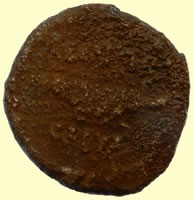
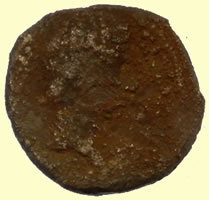
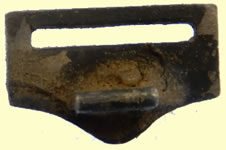

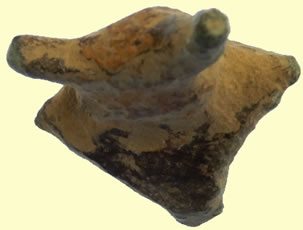
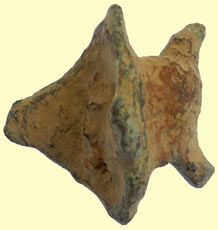
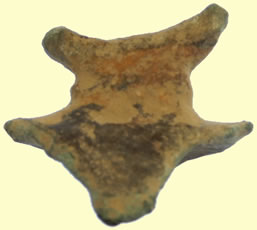
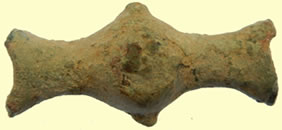
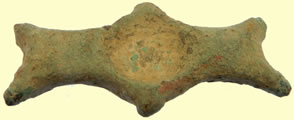

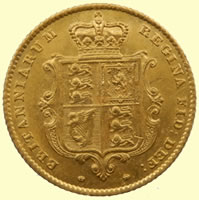
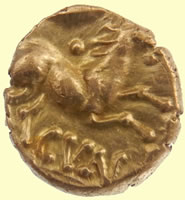
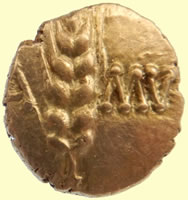
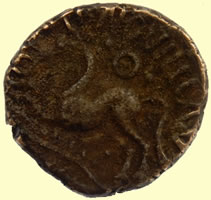


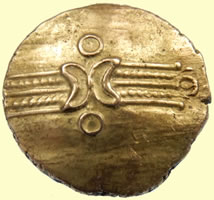

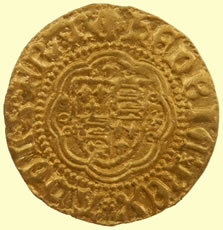
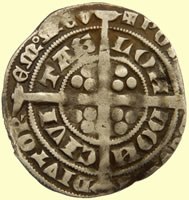


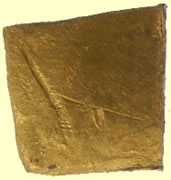

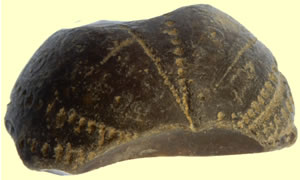

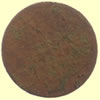
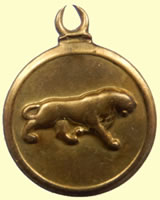
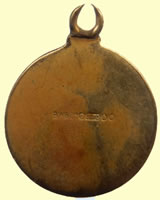
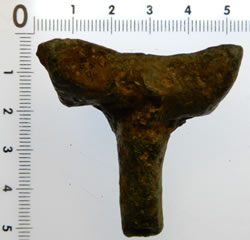
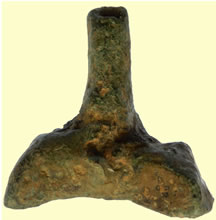
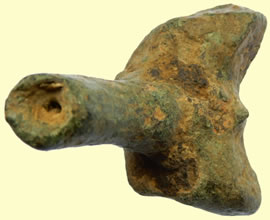

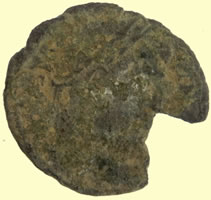
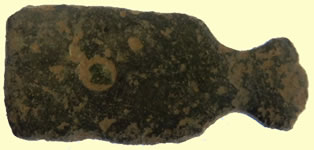

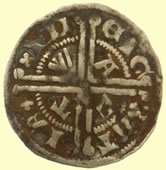
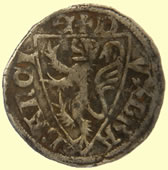
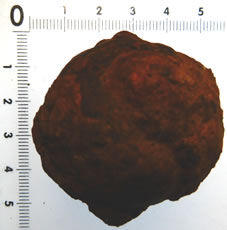
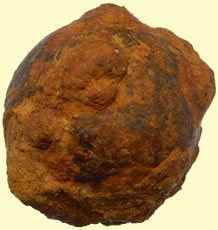
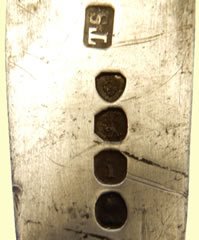
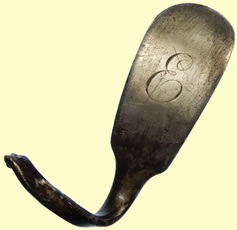
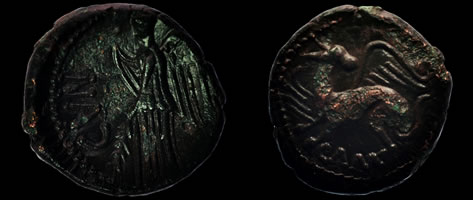
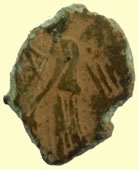
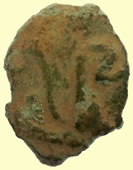
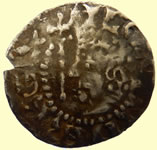

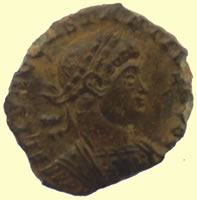
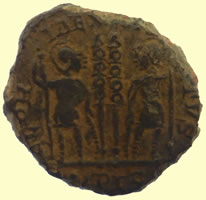
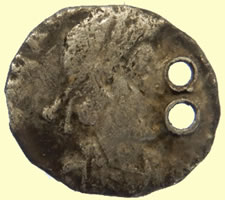


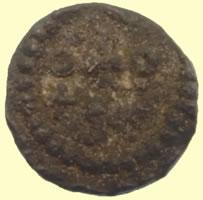
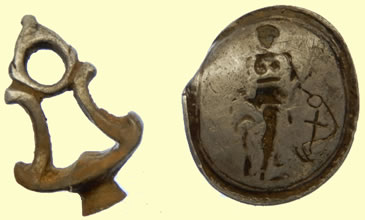
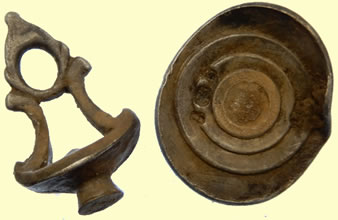
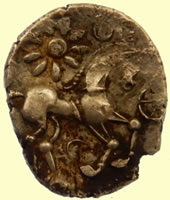
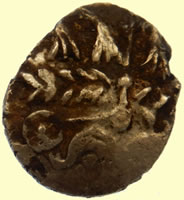

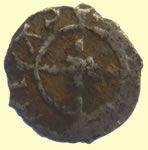
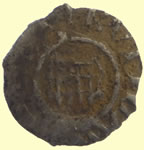
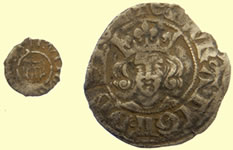



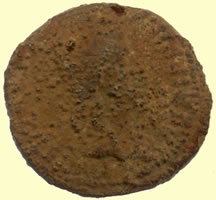

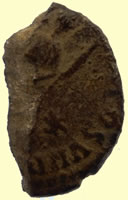
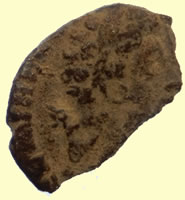

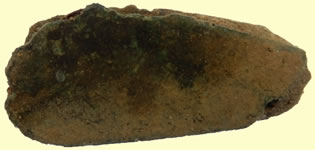
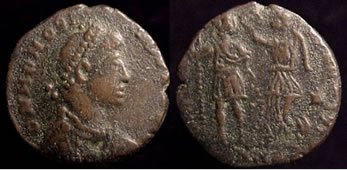
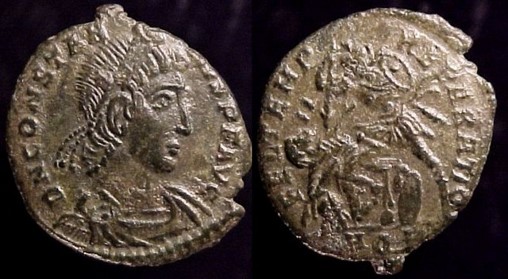
![Contemporary Copy of: Constans, 337-350 AD. “Æ 2” / Billon Majorina 19mm, 3.14gm, axis: 180º / 6h Mint of Heraclea, 348-50 AD. Obv: D N CONSTANS P F AVG. Diademed draped and cuirassed bust left holding globe. Rx: FEL TEMP REPARATIO. Soldier walking right holding spear downward between legs, leading youth from hut beneath tree; in ex, [SMHA(*?)] Prototype: RIC VIII 71 or 78; LRBC 1884; Cf. SR 3976; VM 49.](2017Octfinds_clip_image004.jpg)
